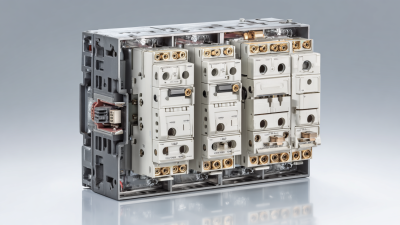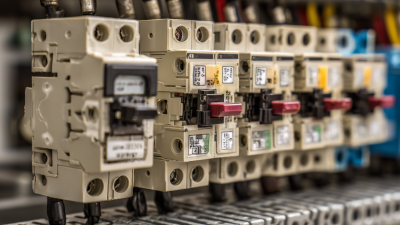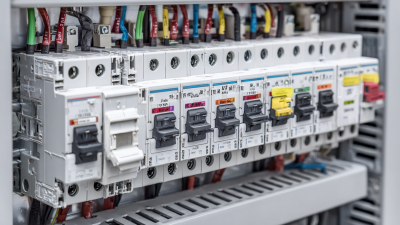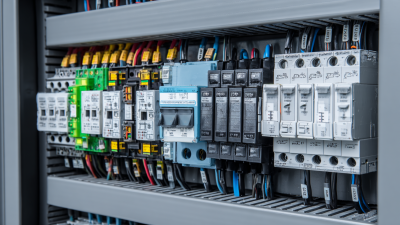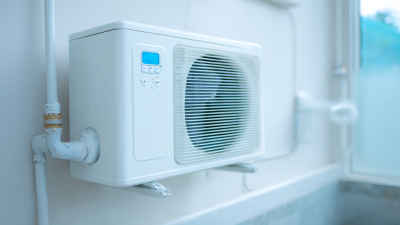Ultimate Guide to Understanding Molded Case Circuit Breakers for Enhanced Electrical Safety and Efficiency
Molded Case Circuit Breakers (MCCBs) play a critical role in modern electrical systems, serving as vital components for protecting against overloads and short circuits. According to a report by MarketsandMarkets, the global MCCB market is expected to reach $7.85 billion by 2023, growing at a CAGR of 6.2% as industries increasingly prioritize electrical safety and efficiency. This underscores the importance of understanding the operational principles, functionalities, and advancements in MCCB technology. In this ultimate guide, we will explore how these devices not only enhance safety standards but also improve energy efficiency in various applications, ensuring that businesses can maintain optimal performance while minimizing risks associated with electrical failures. Join us as we delve into the intricacies of MCCBs and uncover best practices for their effective implementation in your electrical systems.
Types of Molded Case Circuit Breakers: A Comprehensive Comparison
Molded case circuit breakers (MCCBs) are essential components in modern electrical systems, offering protection and control for various applications. Understanding the different types of MCCBs available is crucial for selecting the right model for your needs. The most common types include thermal magnetic, electronic, and adjustable MCCBs. Thermal magnetic breakers combine thermal and magnetic trip mechanisms, providing reliable overload and short-circuit protection, making them suitable for general industrial use.
On the other hand, electronic MCCBs utilize advanced technology to offer precise trip settings and better monitoring capabilities. These breakers are ideal for applications where load conditions can vary significantly, as they allow users to adjust the trip levels to match specific requirements. Lastly, adjustable MCCBs offer the flexibility to modify settings based on changing electrical demands. This feature makes them particularly beneficial in scenarios where equipment loads might increase or fluctuate over time. Understanding these types will help improve both electrical safety and efficiency in your projects.

Key Features to Consider When Choosing Molded Case Circuit Breakers
When it comes to selecting molded case circuit breakers (MCCBs), understanding their key features is essential for ensuring both electrical safety and efficiency. One of the primary considerations is the current rating, which determines the maximum load the breaker can handle. Choosing the right current rating for your application prevents overload and minimizes the risk of circuit failure. A general tip is to assess your equipment's full load current and select an MCCB that exceeds this value for optimal performance.
Another critical feature is the trip mechanism, which safeguards your electrical circuit against overload and short circuits. MCCBs can be equipped with thermal, magnetic, or electronic trip systems, each providing different levels of protection and response times. It's advisable to evaluate the specific requirements of your electrical system to make an informed choice. For instance, electronic trip devices offer more precise protection and can be customized, making them ideal for sensitive applications.
Lastly, consider the enclosure rating of the molded case circuit breaker, which relates to its ability to withstand dust, moisture, and other environmental factors. This feature is particularly important for installations in harsh conditions. As a tip, always check the IP (Ingress Protection) rating of the MCCB to ensure it meets the demands of your installation environment, thus enhancing safety and reliability.
Performance Metrics: Evaluating Efficiency of Different Circuit Breakers
When considering the efficiency of different molded case circuit breakers (MCCBs), it’s crucial to evaluate key performance metrics that characterize their operation. One important aspect is the interrupting capacity, which indicates a circuit breaker’s ability to safely interrupt current flow during a fault condition. A higher interrupting capacity means better protection for electrical systems, reducing the risk of damage and enhancing overall safety. Additionally, the thermal-magnetic operation of MCCBs plays a significant role in their efficiency, as it enables the device to respond effectively to overloads and short circuits.
Another performance metric to consider is the trip curve, which outlines the response time of the circuit breaker to various fault conditions. Different trip curves (B, C, D) cater to specific applications, allowing users to select the most suitable type based on the load characteristics. This tailored approach improves energy efficiency and reduces unnecessary downtime. Furthermore, energy loss during operation—measured in terms of heat generation and energy consumption—should also be assessed to determine the long-term operational costs and effectiveness of the MCCB. By focusing on these metrics, users can make informed choices that enhance electrical safety while optimizing system efficiency.
Ultimate Guide to Understanding Molded Case Circuit Breakers for Enhanced Electrical Safety and Efficiency - Performance Metrics
| Circuit Breaker Type |
Rated Current (A) |
Interrupting Capacity (kA) |
Response Time (ms) |
Energy Efficiency (%) |
| Type A |
100 |
10 |
30 |
92 |
| Type B |
125 |
12 |
35 |
90 |
| Type C |
150 |
15 |
40 |
88 |
| Type D |
200 |
20 |
45 |
85 |
Safety Standards and Compliance: A Comparative Analysis
Safety standards and compliance play a crucial role in the effectiveness of Molded Case Circuit Breakers (MCCBs). When comparing various regulatory frameworks, it's clear that international standards like IEC 60947-2 and UL 489 govern the design, testing, and performance of these breakers. Understanding these requirements ensures that electrical installations are not only safe but also efficient. Compliance with these standards helps in minimizing risks associated with electrical failures, ensuring that MCCBs provide reliable protection against overloads and short circuits.
Tip: Regularly review the compliance status of your MCCBs with the latest standards to enhance safety and efficiency in your electrical systems. This includes checking for certification marks that verify adherence to relevant safety regulations.
Furthermore, ongoing inspection and maintenance of MCCBs contribute to maintaining safety standards. It's essential to not only install compliant equipment but also to routinely assess its functionality. Faulty breakers can lead to severe hazards, including electrical fires.
Tip: Implement a periodic maintenance schedule for all MCCBs, and ensure training for personnel on recognizing signs of wear or malfunction to maintain compliance and enhance overall safety.
Understanding Molded Case Circuit Breakers (MCCB) Compliance Standards
Cost-Benefit Assessment: Understanding Investment in Electrical Safety Solutions
Investing in electrical safety solutions, particularly
molded case circuit breakers (MCCBs), can yield significant long-term benefits
for both residential and commercial properties. While the initial cost of purchasing and installing MCCBs may seem daunting,
their ability to provide enhanced protection against electrical faults and overloads justifies this investment. By effectively minimizing
the risk of electrical fires and equipment damage, MCCBs can save property owners from potentially devastating losses.

Moreover, the cost-benefit assessment of these electrical safety solutions extends beyond immediate financial implications.
In addition to preventing costly incidents, MCCBs contribute to overall energy efficiency.
Their advanced technologies help in reducing energy waste by ensuring that electrical systems operate within safe parameters,
ultimately lowering electricity bills. Furthermore, upgrading to MCCBs may lead to insurance premium reductions,
further demonstrating the financial prudence of investing in robust electrical safety measures.

Home
About Us
Products
Terminal Power Distribution Electric
AC Miniature Circuit Breaker
 BY06H-125 MCB 10-15KA Miniature Circuit Breaker
BY06H-125 MCB 10-15KA Miniature Circuit Breaker
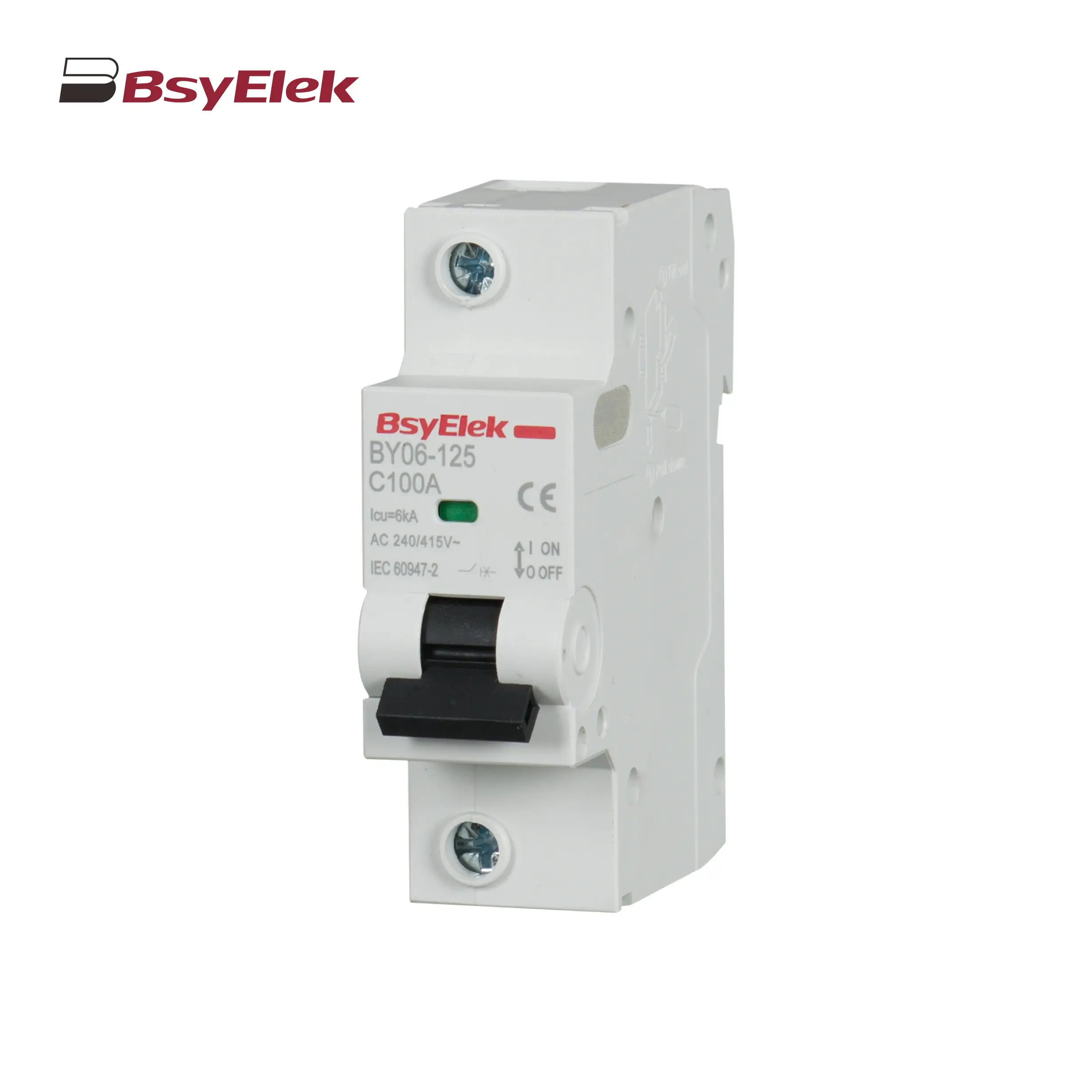 BY06-125 MCB 6KA Miniature Circuit Breaker
BY06-125 MCB 6KA Miniature Circuit Breaker
 BY05H-40 MCB Single Modular 6KA Miniature Circuit Breaker
BY05H-40 MCB Single Modular 6KA Miniature Circuit Breaker
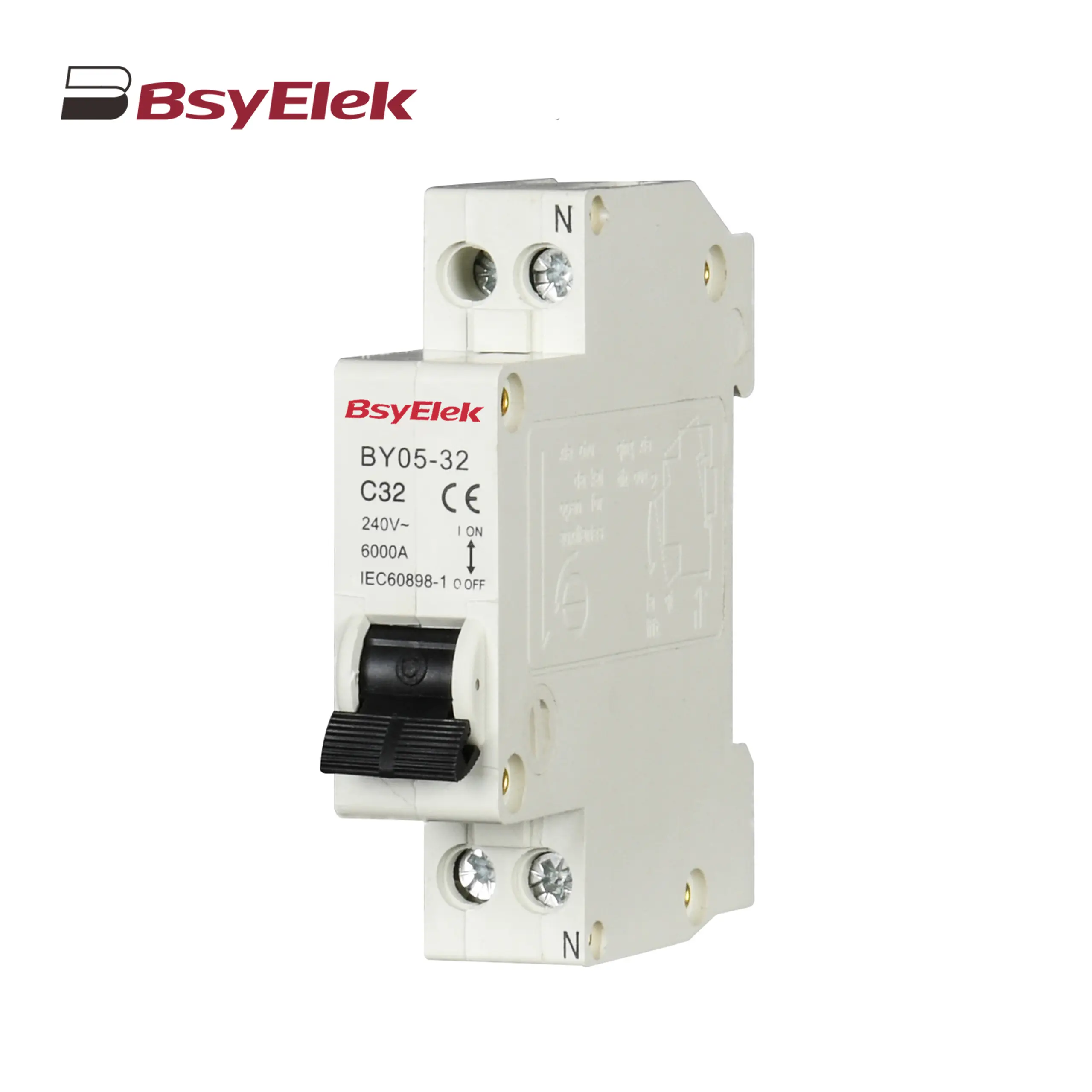 BY05-32 MCB Single Modular 3KA Miniature Circuit Breaker
BY05-32 MCB Single Modular 3KA Miniature Circuit Breaker
 BY04-63 MCB 6-10KA Miniature Circuit Breaker
BY04-63 MCB 6-10KA Miniature Circuit Breaker
 BY03H-63 MCB 6KA Miniature Circuit Breaker
BY03H-63 MCB 6KA Miniature Circuit Breaker
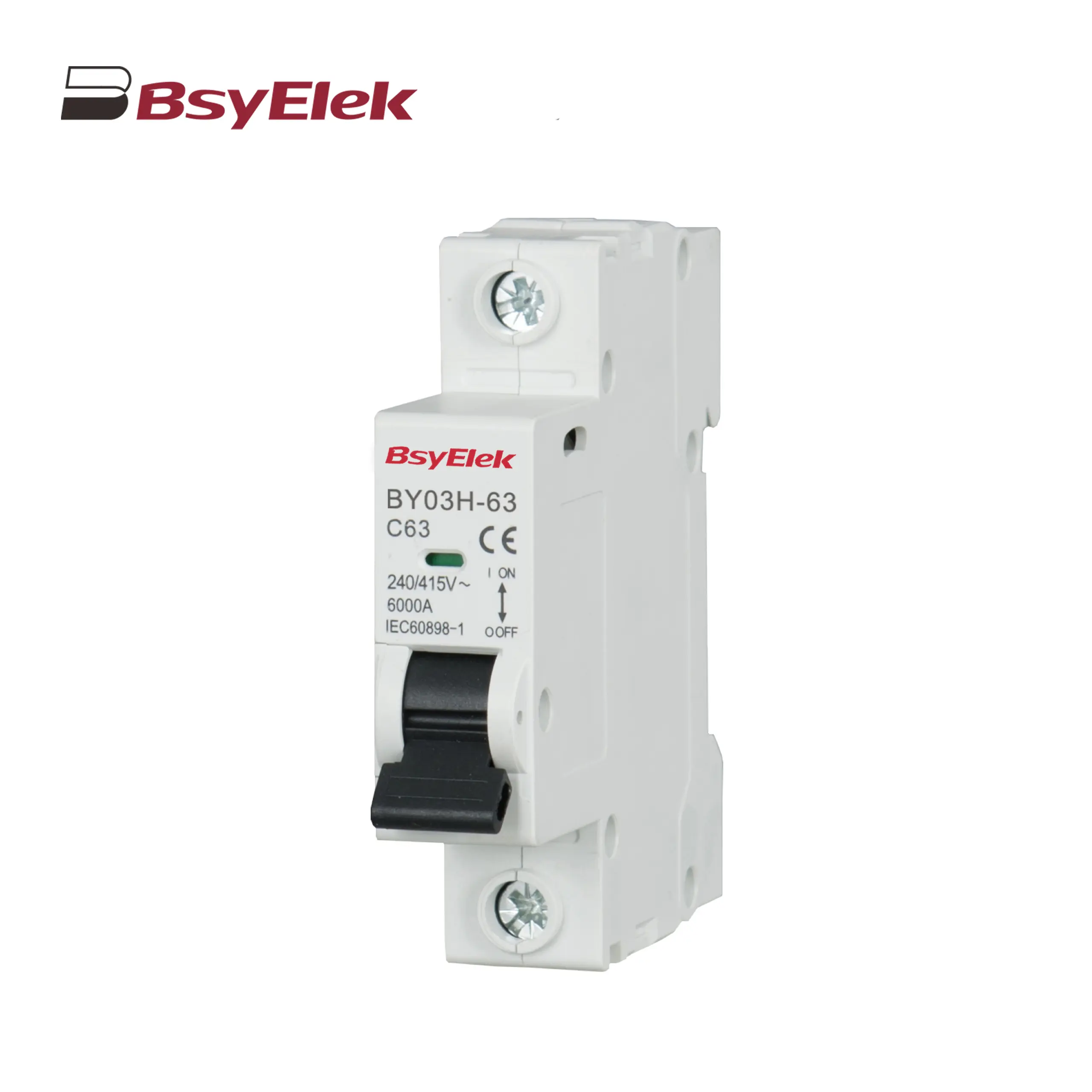 BY03-63 MCB 4.5KA Miniature Circuit Breaker
BY03-63 MCB 4.5KA Miniature Circuit Breaker
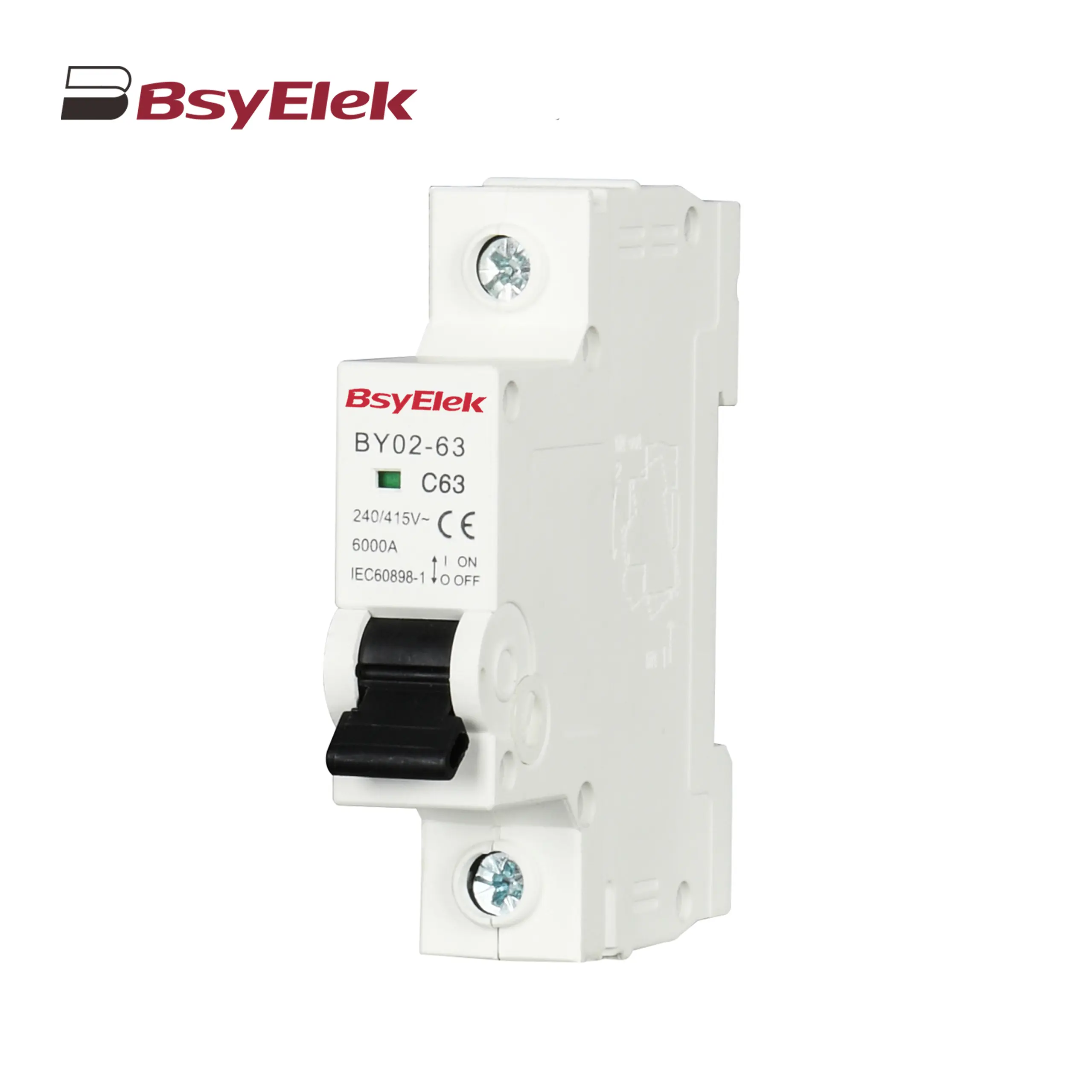 BY02-63 MCB 3kA Miniature Circuit Breaker
BY02-63 MCB 3kA Miniature Circuit Breaker
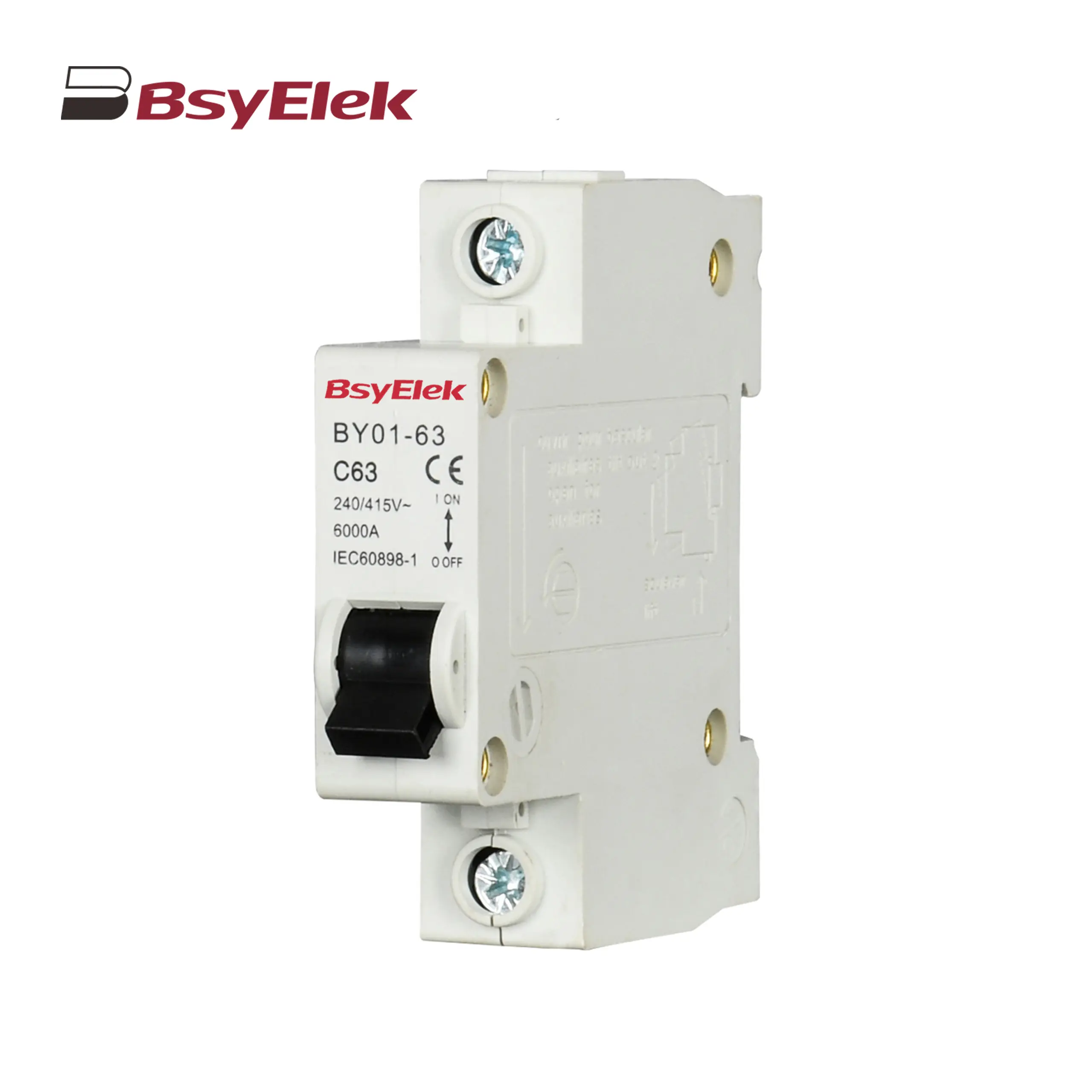 BY01-63 MCB 3kA Miniature Circuit Breaker
BY01-63 MCB 3kA Miniature Circuit Breaker
MCB Accessories
Main Switch
RCBO RCCB
 BY07L-63 RCCB 6KA Residual Current Circuit Breaker
BY07L-63 RCCB 6KA Residual Current Circuit Breaker
 BY05HL-40 RCBO 6KA Residual Current Circuit Breaker with Over-current Protection
BY05HL-40 RCBO 6KA Residual Current Circuit Breaker with Over-current Protection
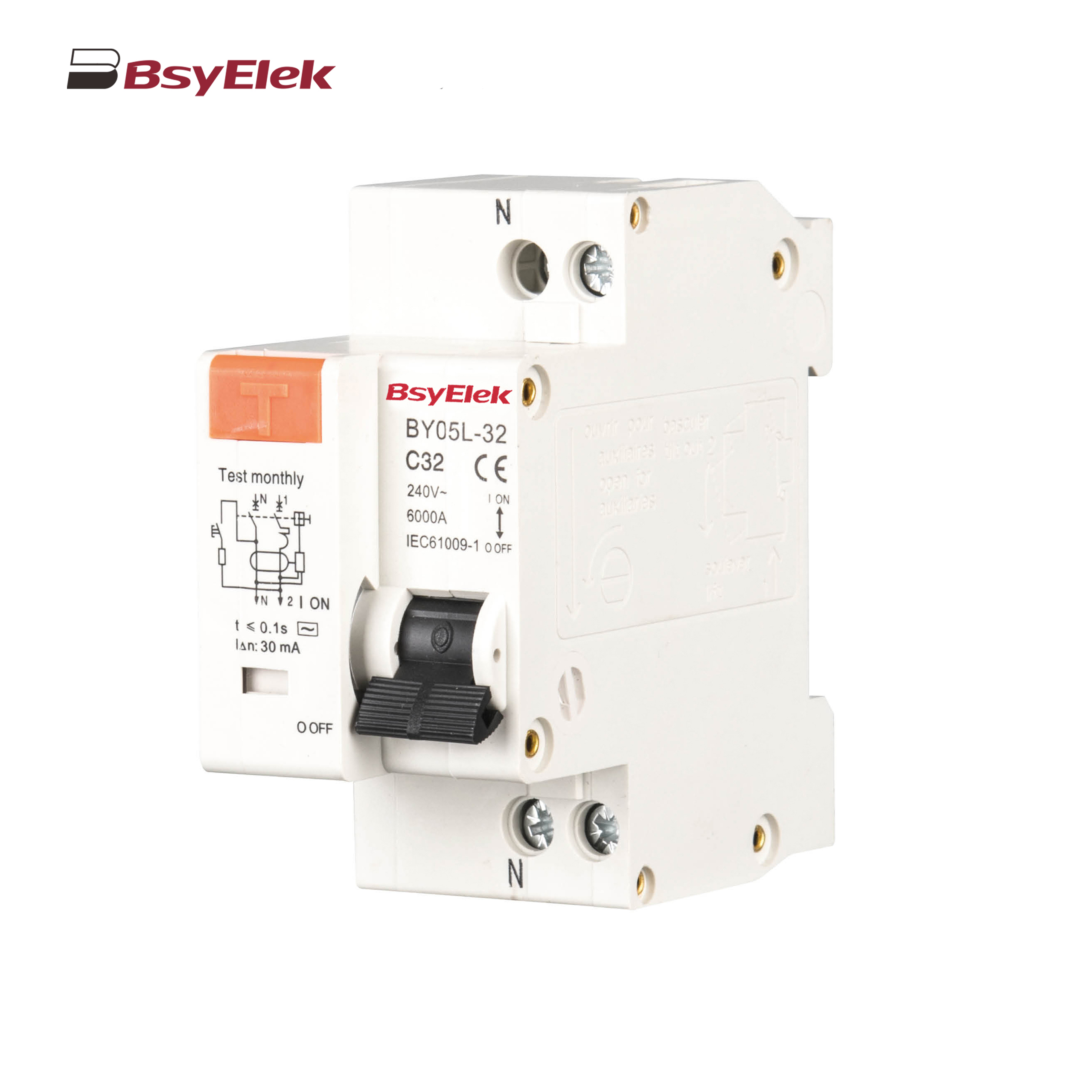 BY05L-32 RCBO 3KA Residual Current Circuit Breaker with Over-current Protection
BY05L-32 RCBO 3KA Residual Current Circuit Breaker with Over-current Protection
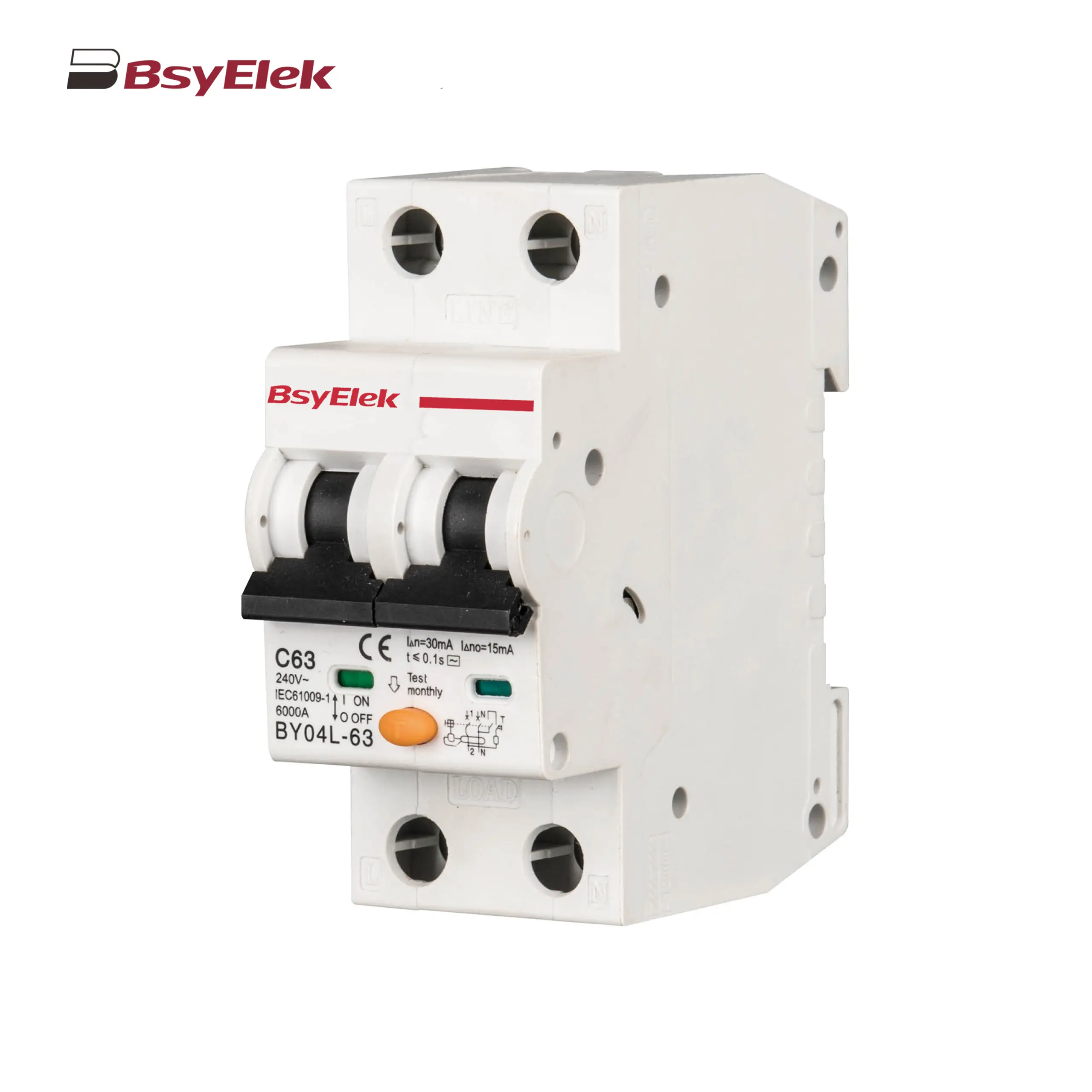 BY04L-63 RCBO 6KA Residual Current Circuit Breaker with Over-current Protection
BY04L-63 RCBO 6KA Residual Current Circuit Breaker with Over-current Protection
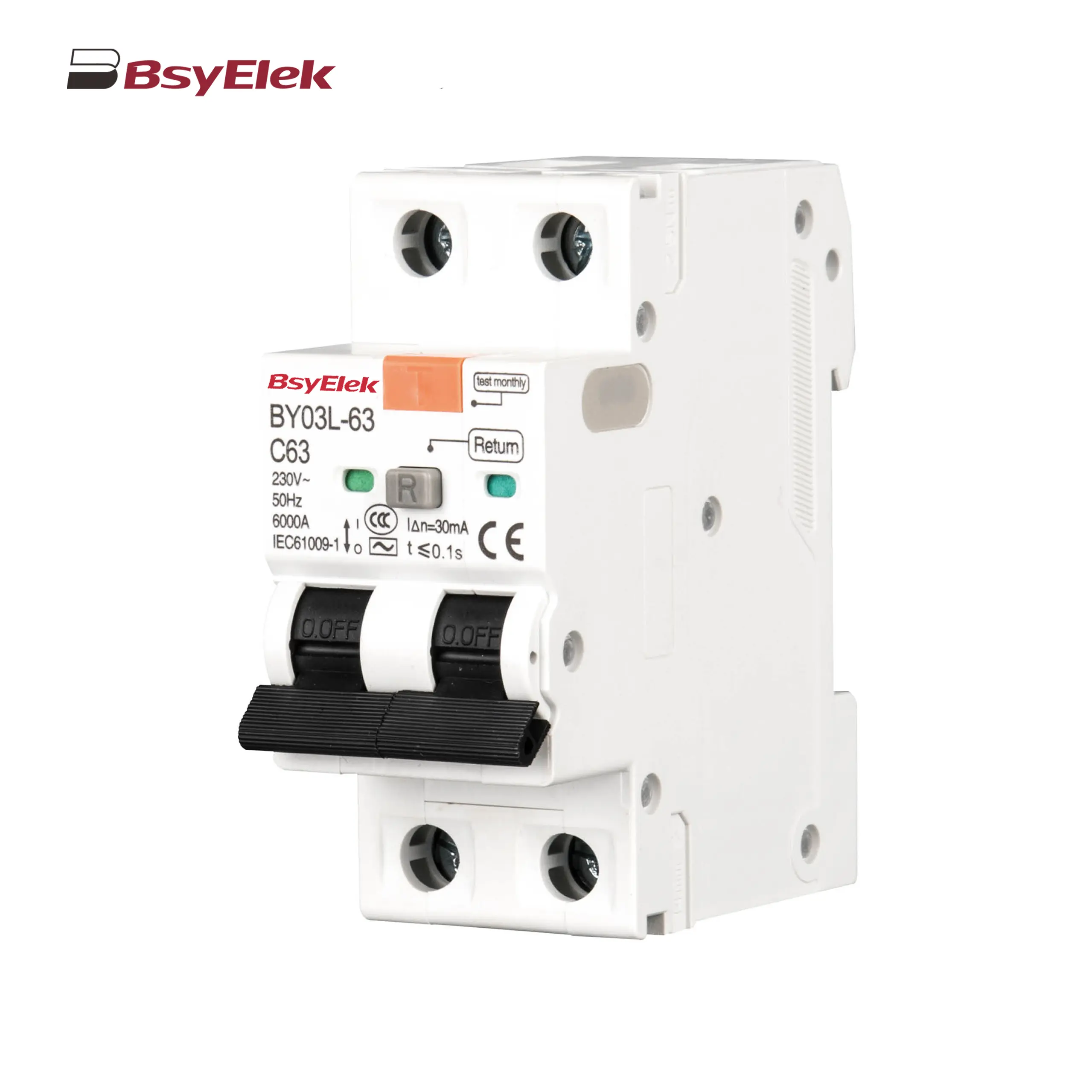 BY03L-63 RCBO 4.5KA Residual Current Circuit Breaker with Over-current Protection
BY03L-63 RCBO 4.5KA Residual Current Circuit Breaker with Over-current Protection
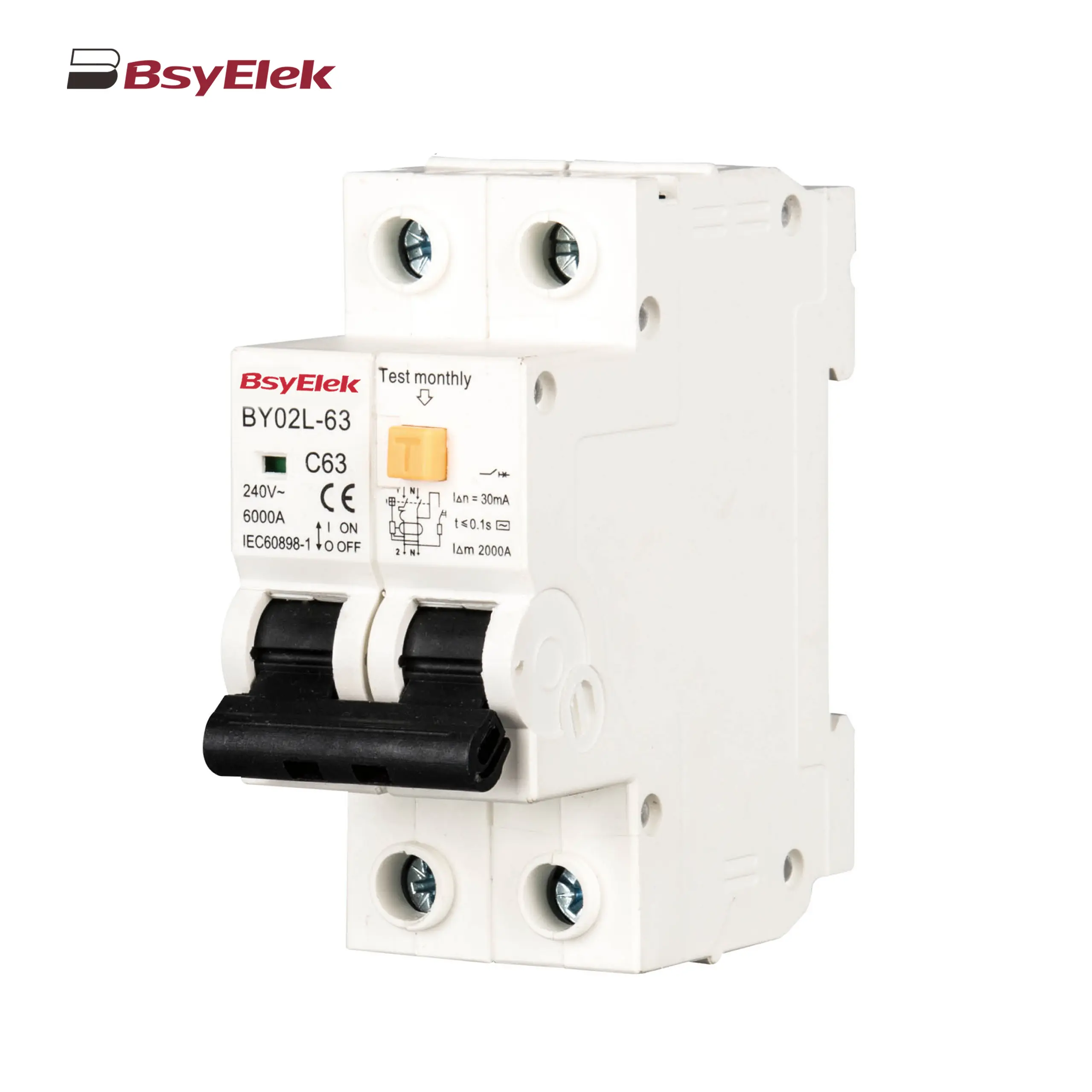 BY02L-63 RCBO 3KA Residual Current Circuit Breaker with Over-current Protection
BY02L-63 RCBO 3KA Residual Current Circuit Breaker with Over-current Protection
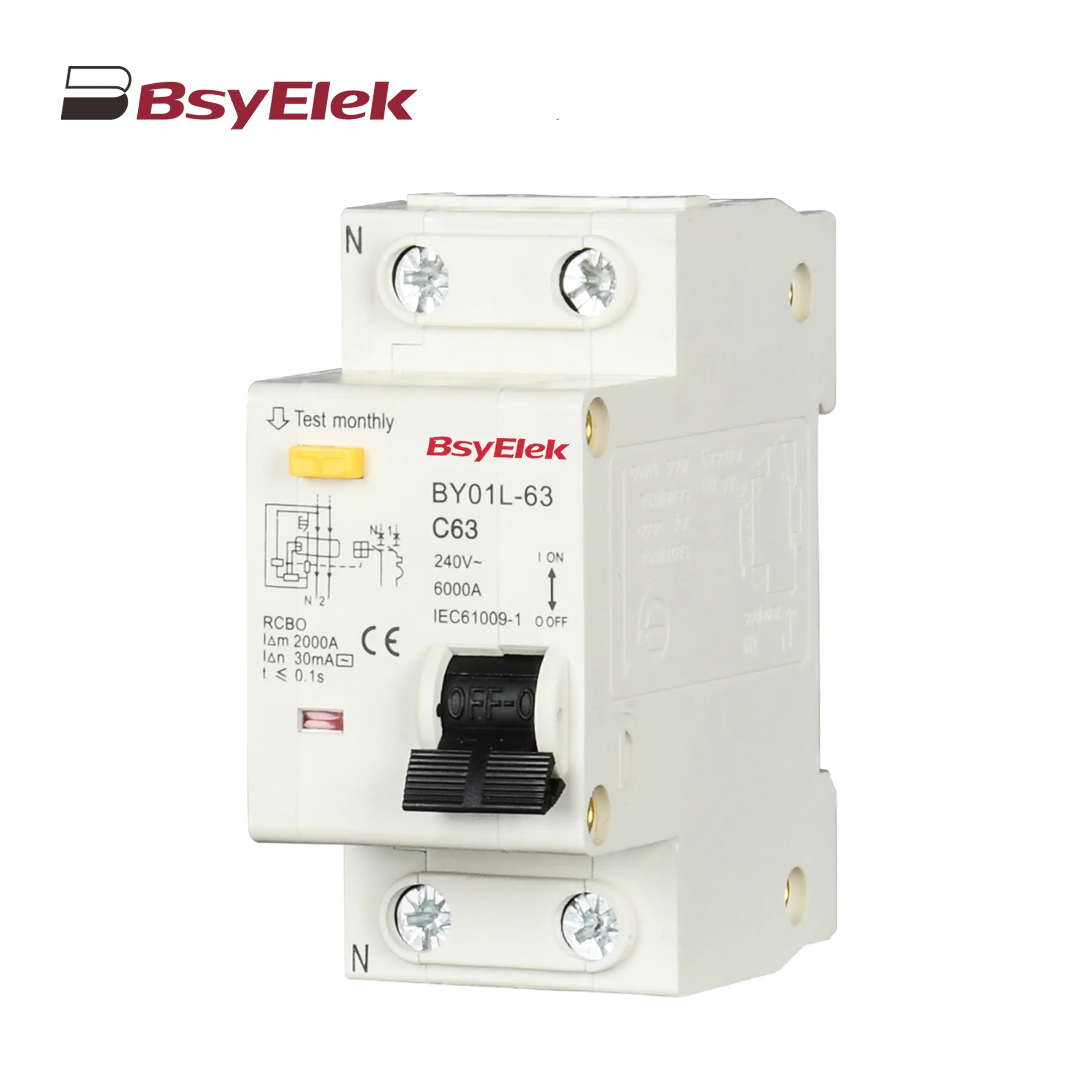 BY01L-63 RCBO 1P+N 3KA Residual Current Circuit Breaker with Over-current Protection
BY01L-63 RCBO 1P+N 3KA Residual Current Circuit Breaker with Over-current Protection
Resettable Overvoltage and Undervoltage Protector
AC Contactor
AC Surge Protective Device
Changeover Switch
Photovoltaic System Protection
DC Miniature Circuit Breaker
 BY06H-125DC MCB 10-15kA DC Miniature Circuit Breaker
BY06H-125DC MCB 10-15kA DC Miniature Circuit Breaker
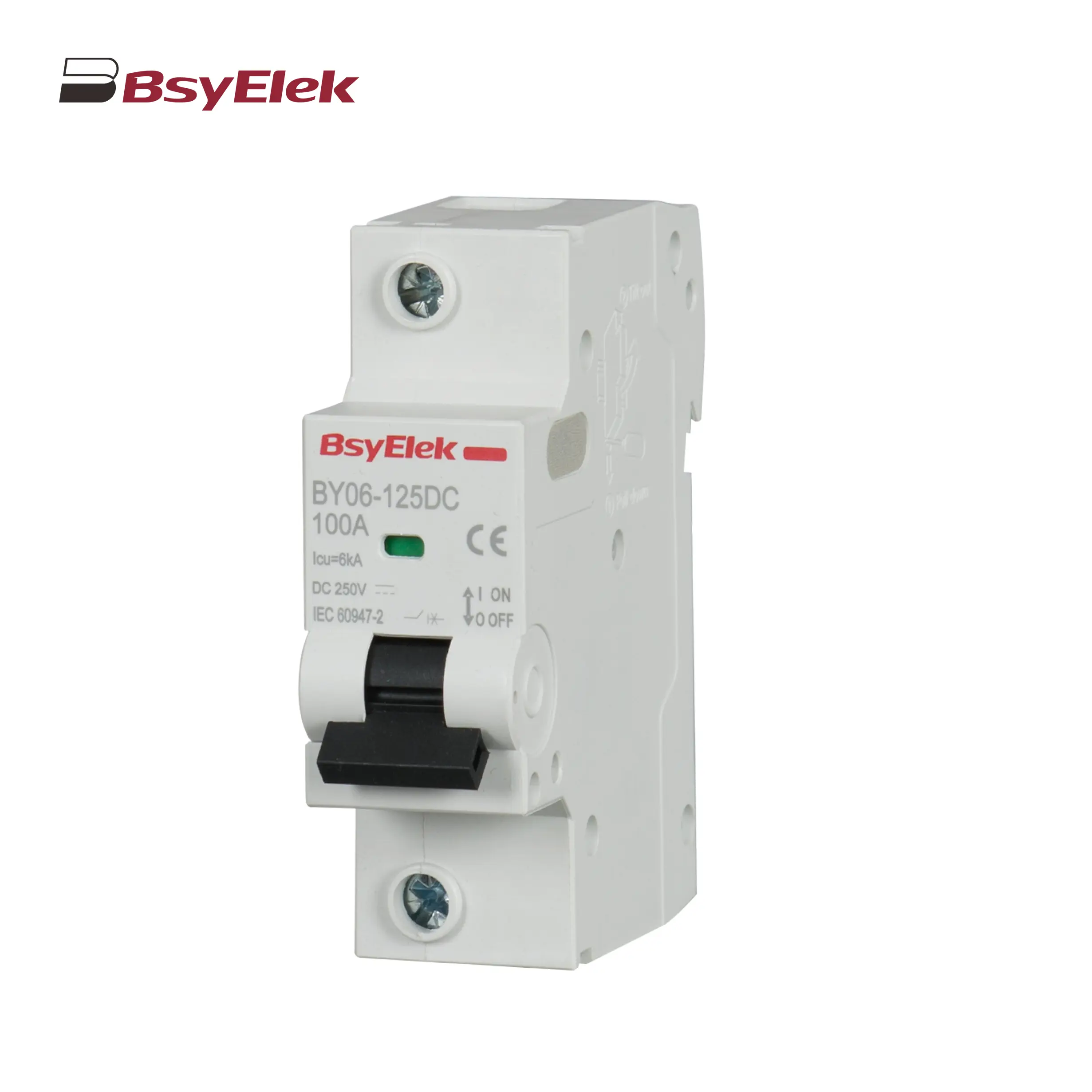 BY06-125DC MCB 6kA DC Miniature Circuit Breaker
BY06-125DC MCB 6kA DC Miniature Circuit Breaker
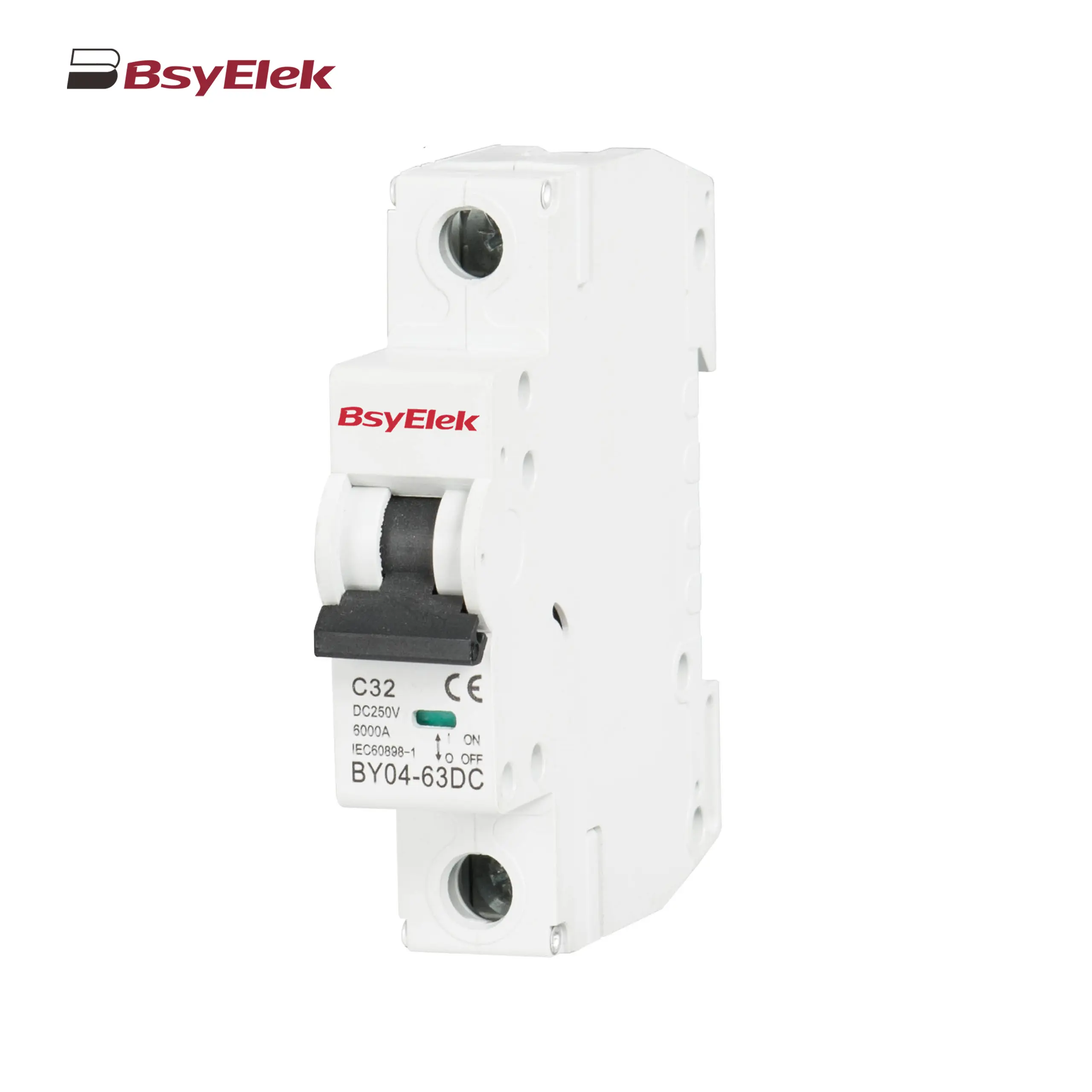 BY04-63DC MCB 6-10kA DC Miniature Circuit Breaker
BY04-63DC MCB 6-10kA DC Miniature Circuit Breaker
 BY03H-63DC MCB 6kA DC Miniature Circuit Breaker
BY03H-63DC MCB 6kA DC Miniature Circuit Breaker
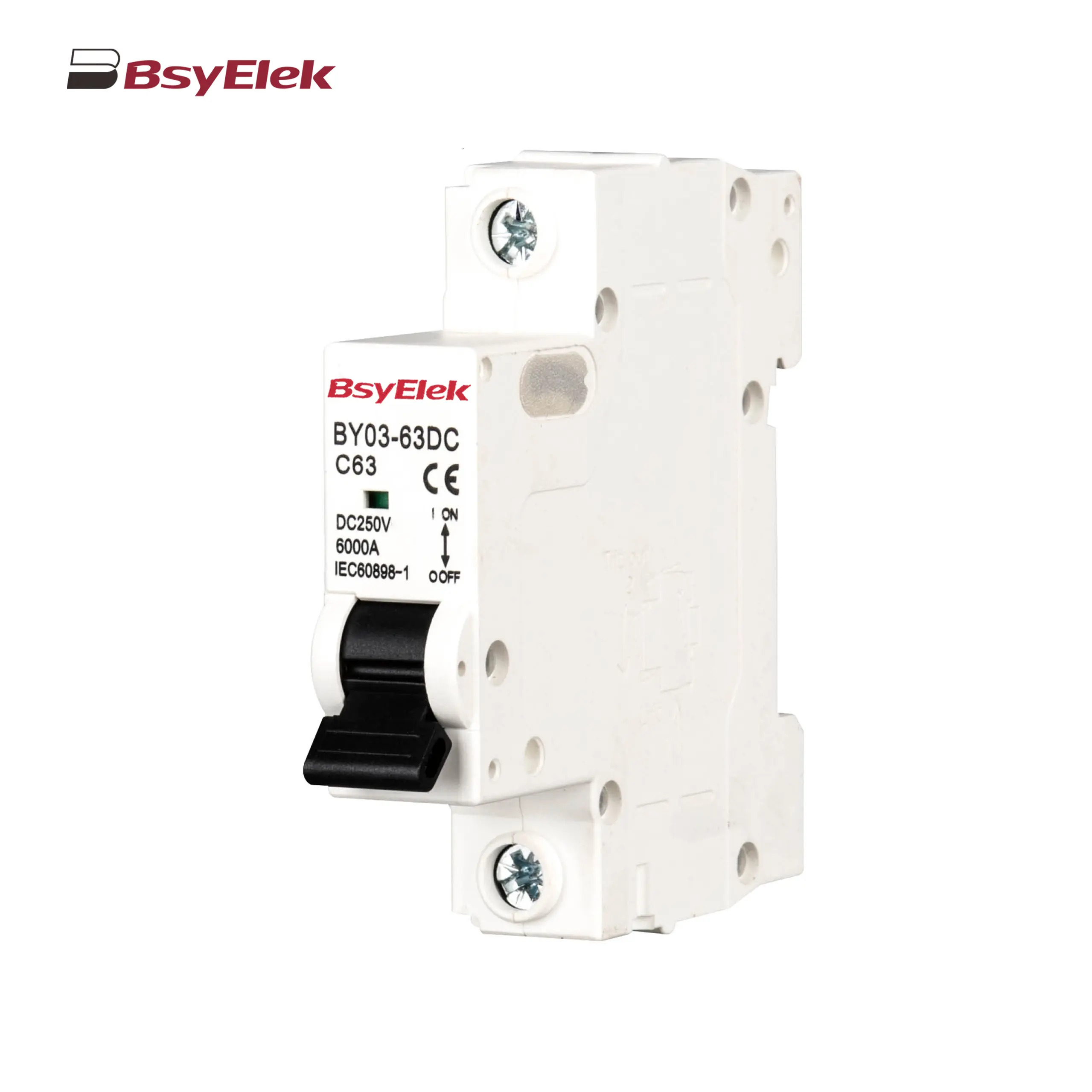 BY03-63DC MCB 4.5kA DC Miniature Circuit Breaker
BY03-63DC MCB 4.5kA DC Miniature Circuit Breaker
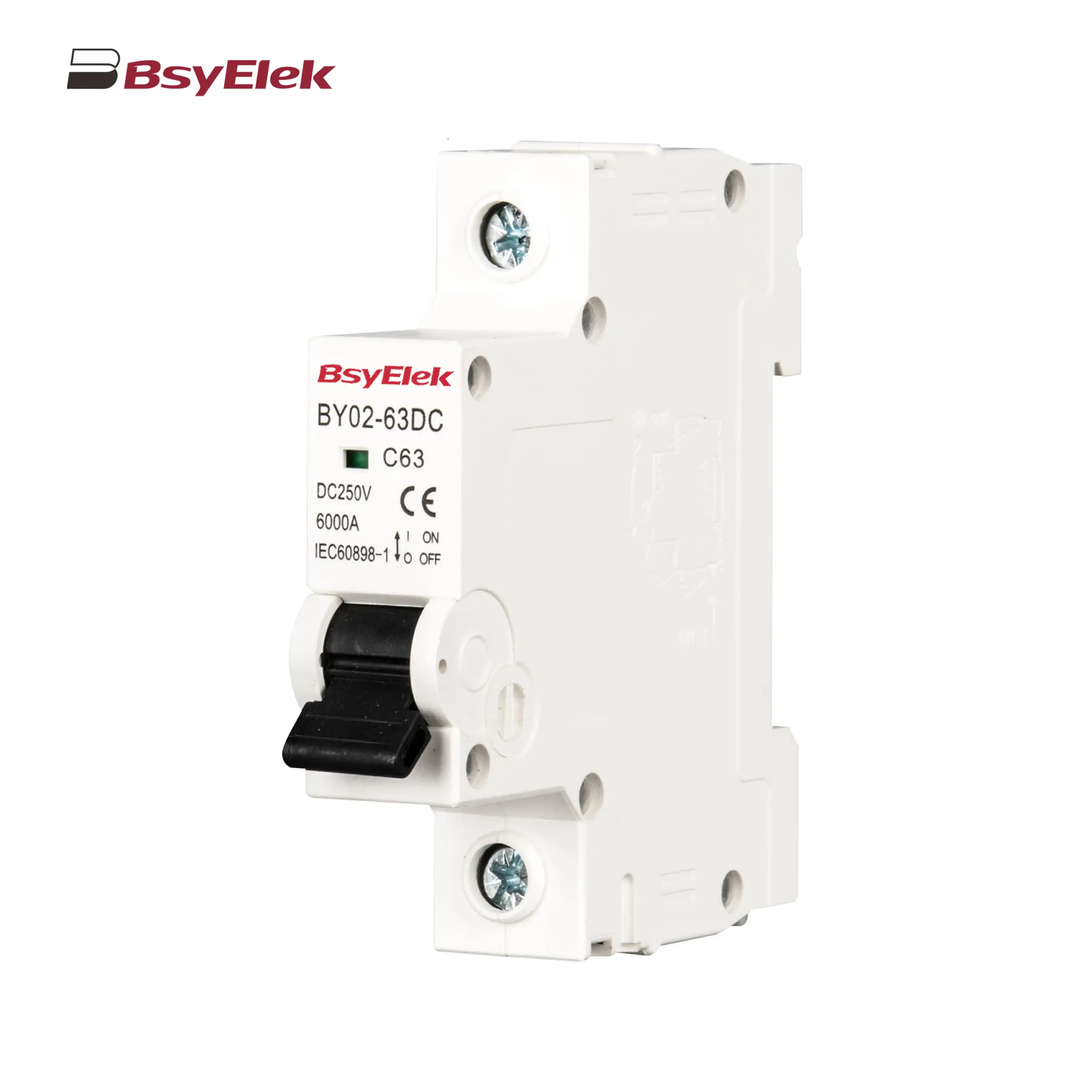 BY02-63DC MCB 3kA DC Miniature Circuit Breaker
BY02-63DC MCB 3kA DC Miniature Circuit Breaker
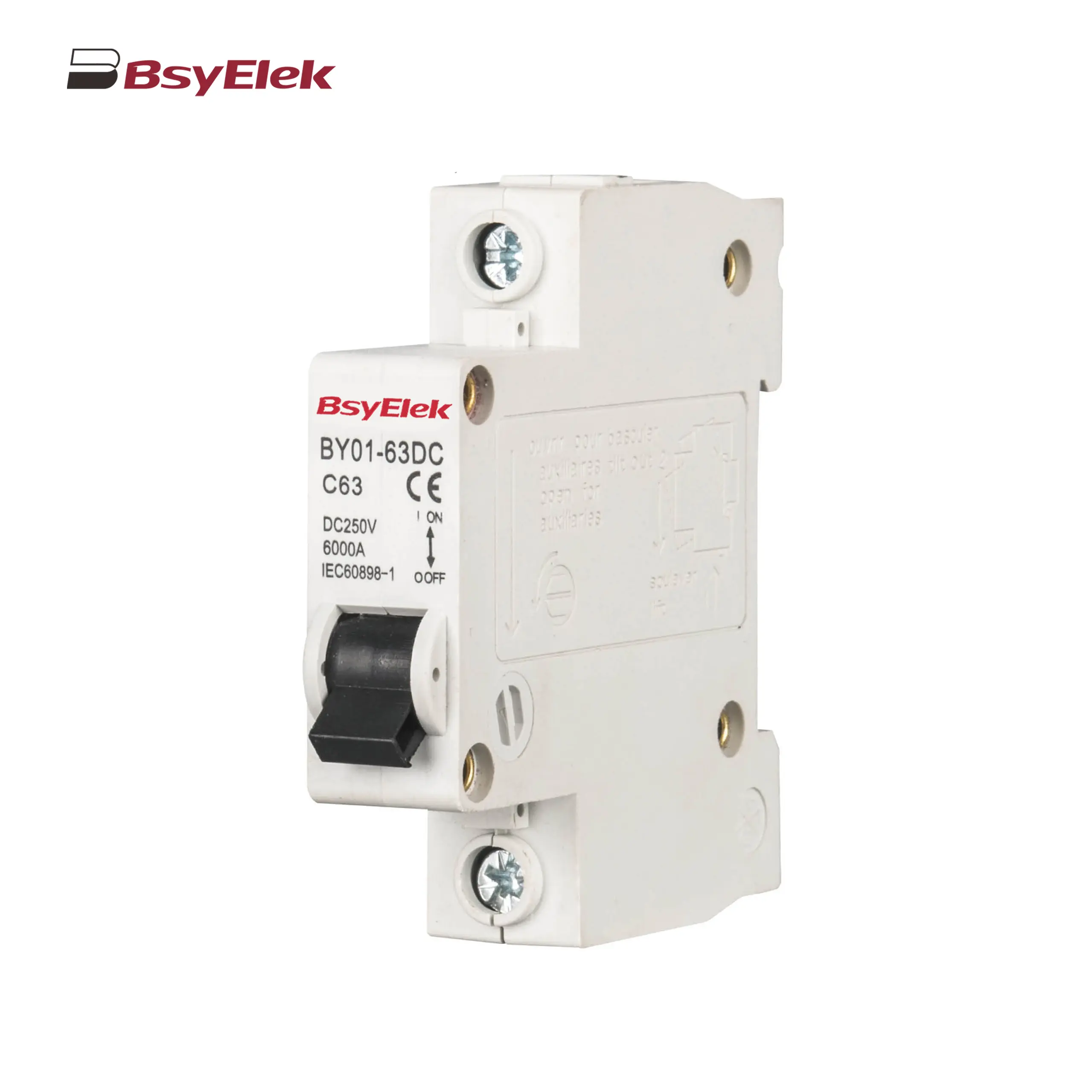 BY01-63DC MCB 3kA DC Miniature Circuit Breaker
BY01-63DC MCB 3kA DC Miniature Circuit Breaker
RCD
DC Surge Protective Device
DC Fuse
PV Isolator Switch
PV Connector
Cable Gland
PV Cable
PV Knife Switch
DC Molded Case Circuit Breaker
Industrial Power Distribution Electric
Distribution Box
Air Conditioning System
Definite Purpose Magnetic Contactor
Condensate Pump
 BY-5018 1.8M Engineering Drainage Pump
BY-5018 1.8M Engineering Drainage Pump
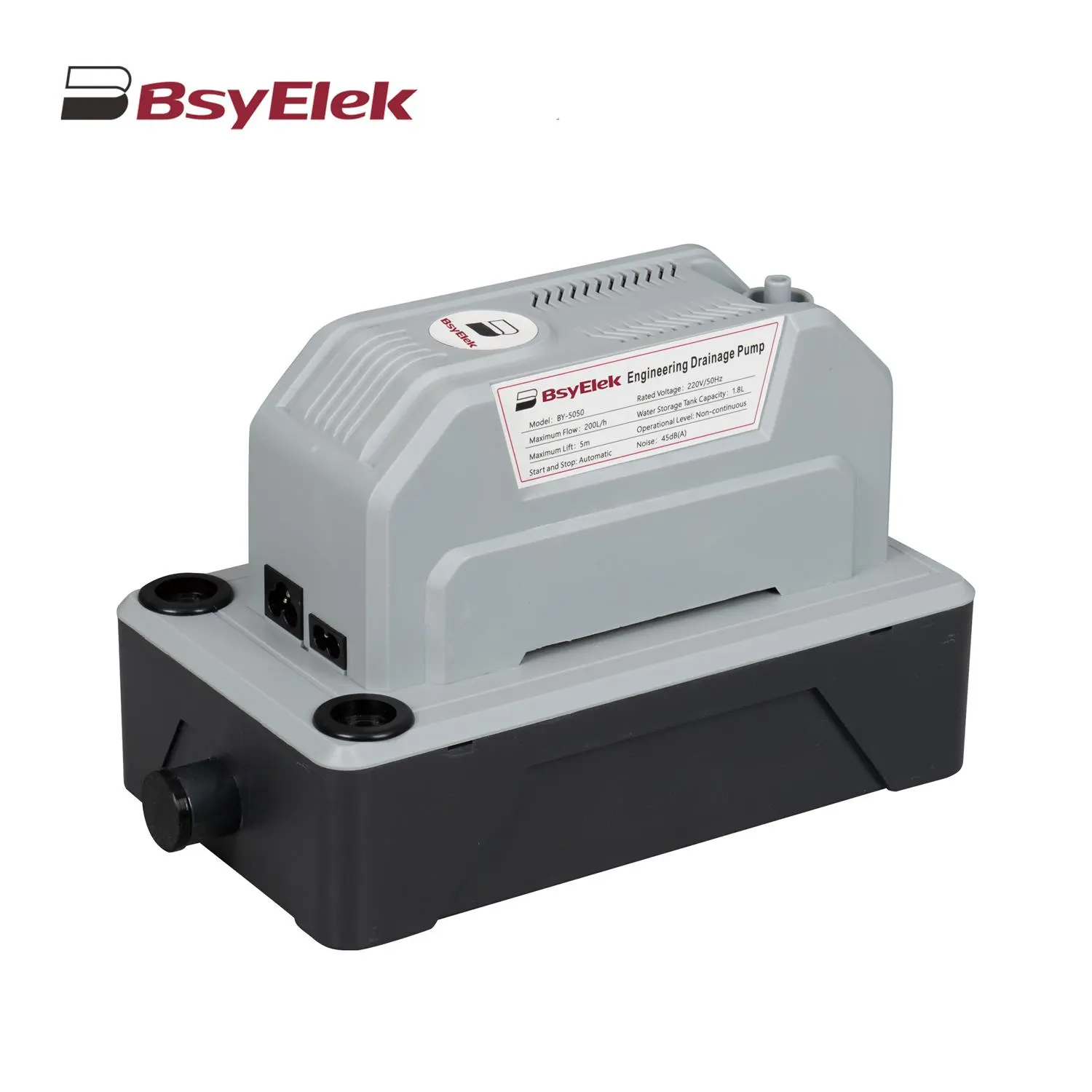 BY-5050 5M Engineering Drainage Pump
BY-5050 5M Engineering Drainage Pump
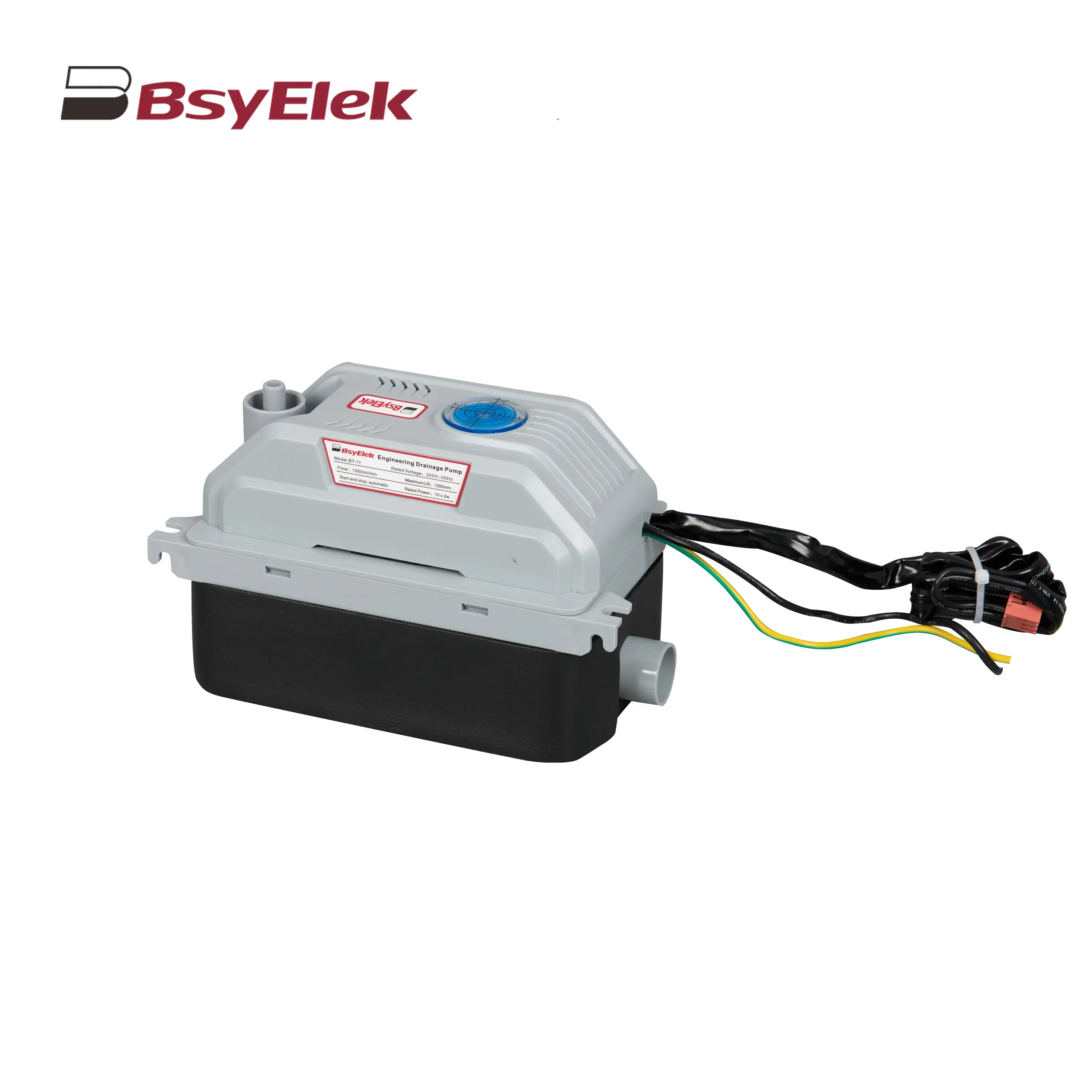 BY-11 1.2M Engineering Drainage Pump
BY-11 1.2M Engineering Drainage Pump
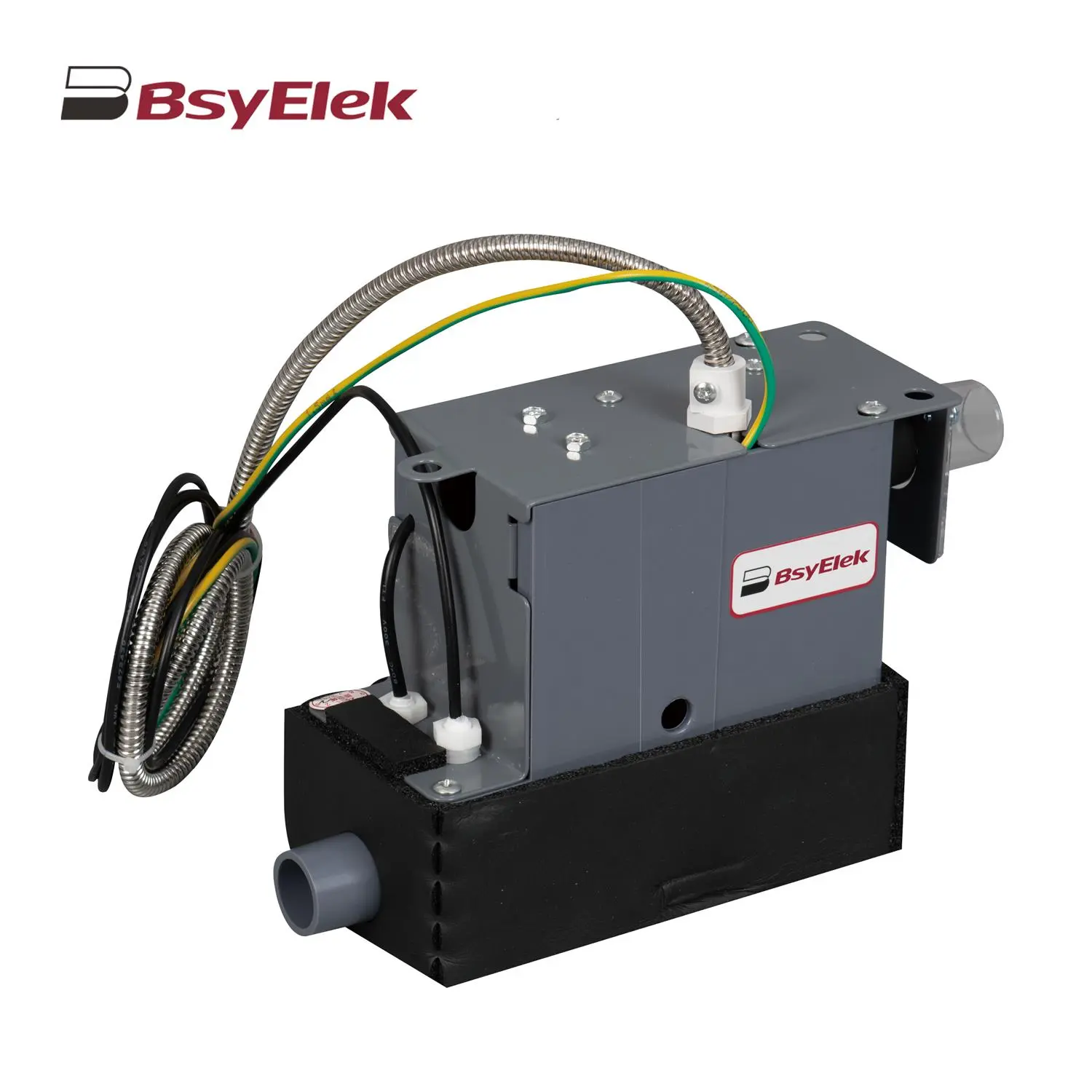 SBH-05 0.7M Original Drainage Pump of Duct Type Air Conditioner
SBH-05 0.7M Original Drainage Pump of Duct Type Air Conditioner
 BY-24A/40A 10M Drainage Pump of Air Conditioner
BY-24A/40A 10M Drainage Pump of Air Conditioner
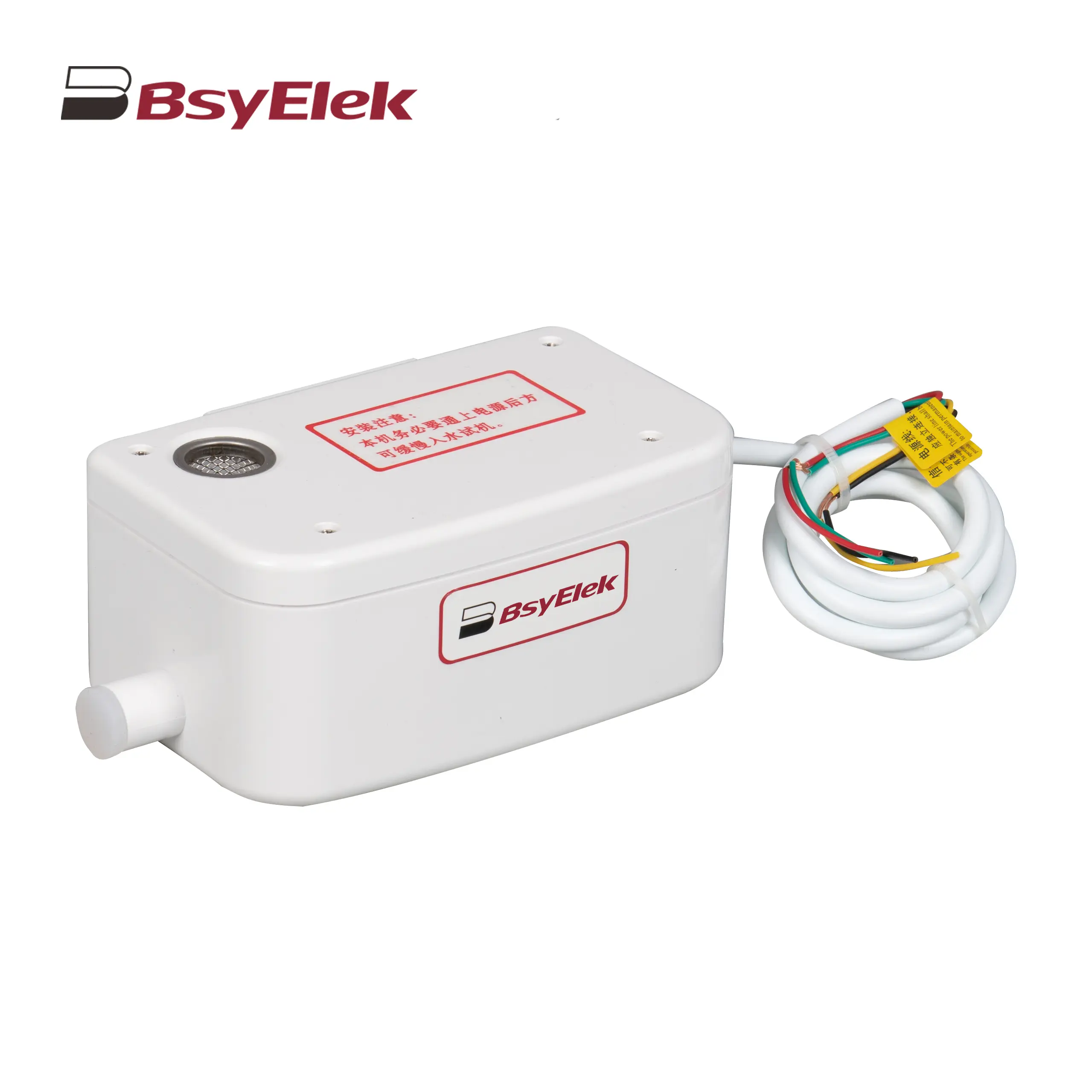 BY-50A 12M Drainage Pump of Air Conditioner
BY-50A 12M Drainage Pump of Air Conditioner
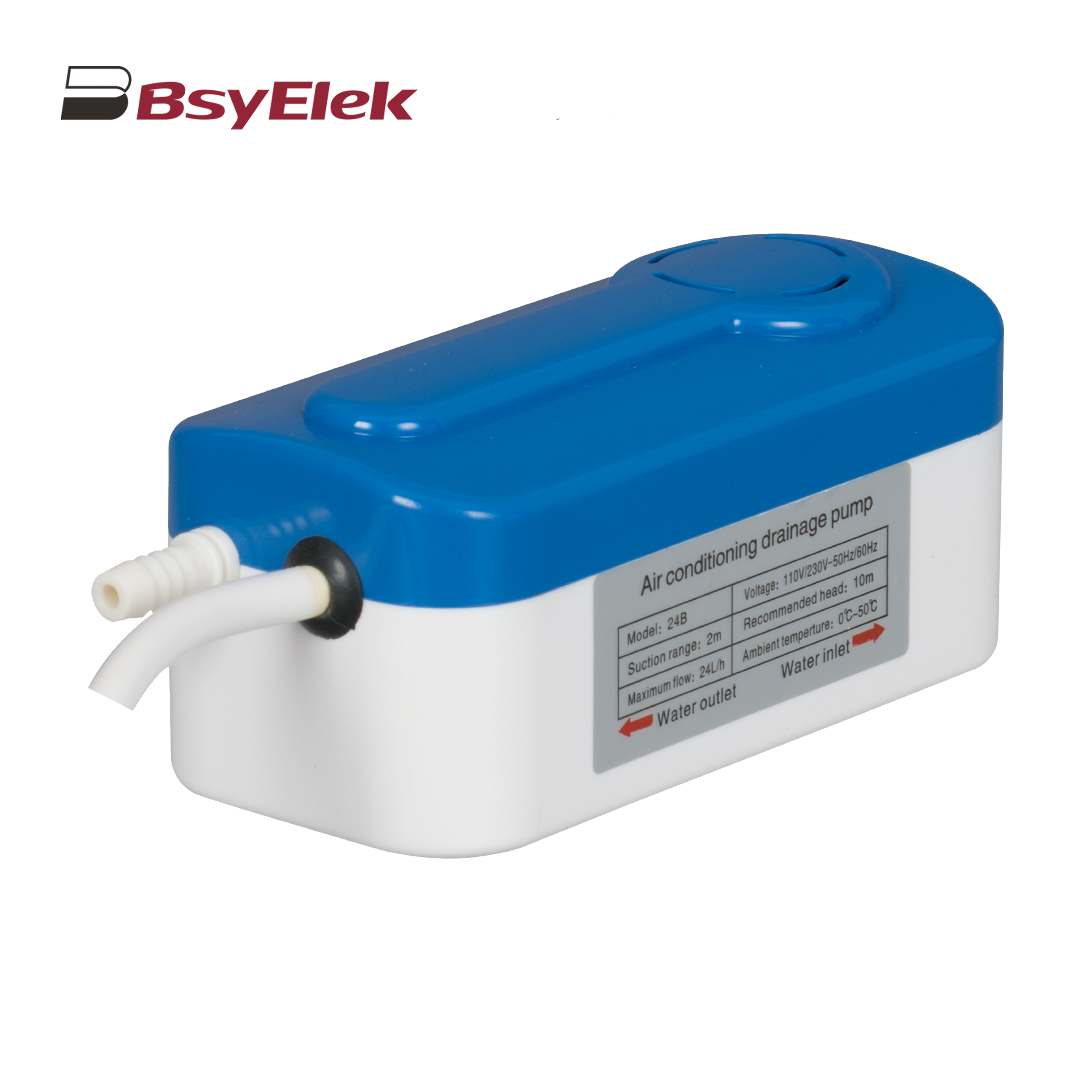 BY-24B/40B 10M Split Type Drainage Pump
BY-24B/40B 10M Split Type Drainage Pump
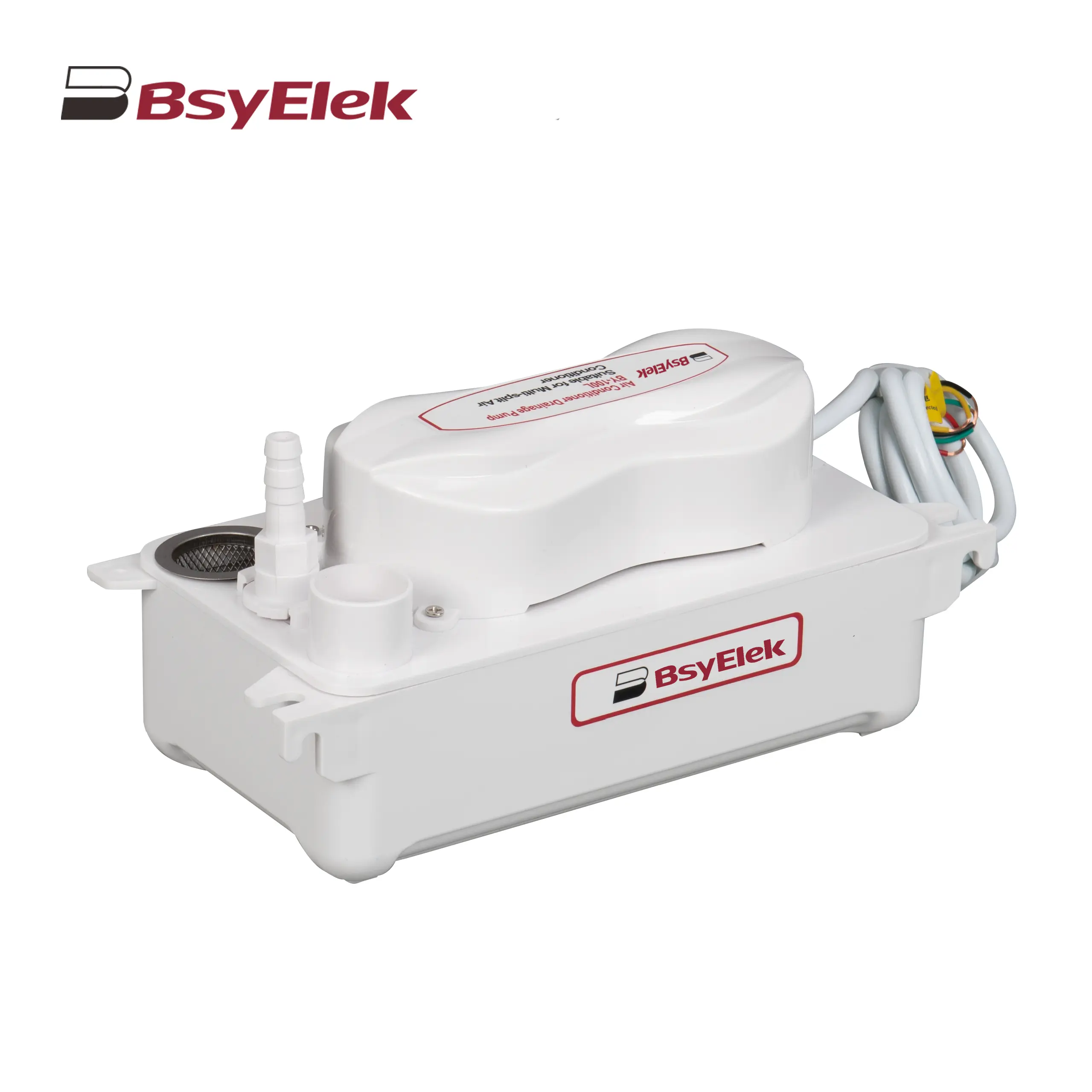 BY-100L 2M Drainage Pump of Air Conditioner
BY-100L 2M Drainage Pump of Air Conditioner
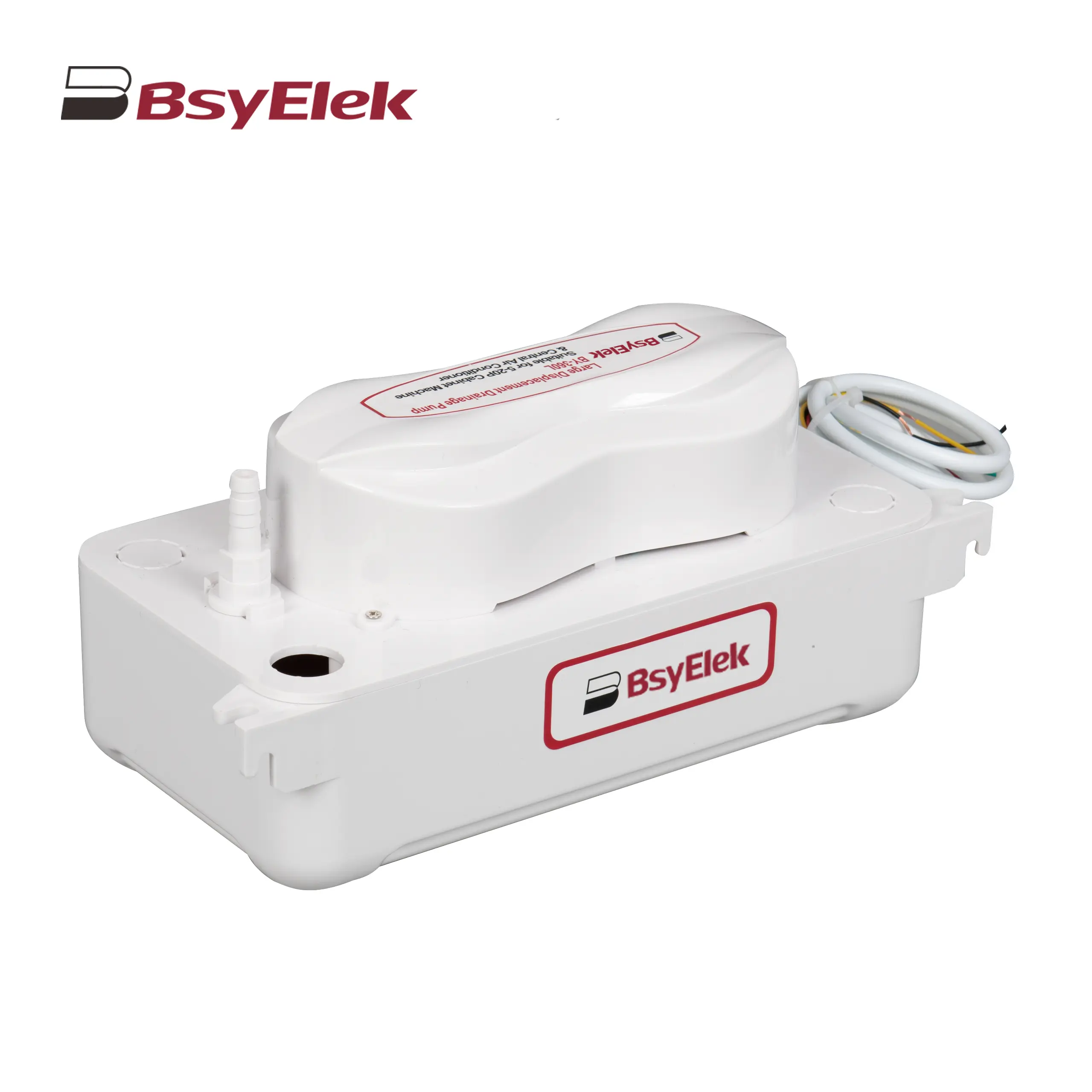 BY-360L 6M Large Displacement Drainage Pump
BY-360L 6M Large Displacement Drainage Pump
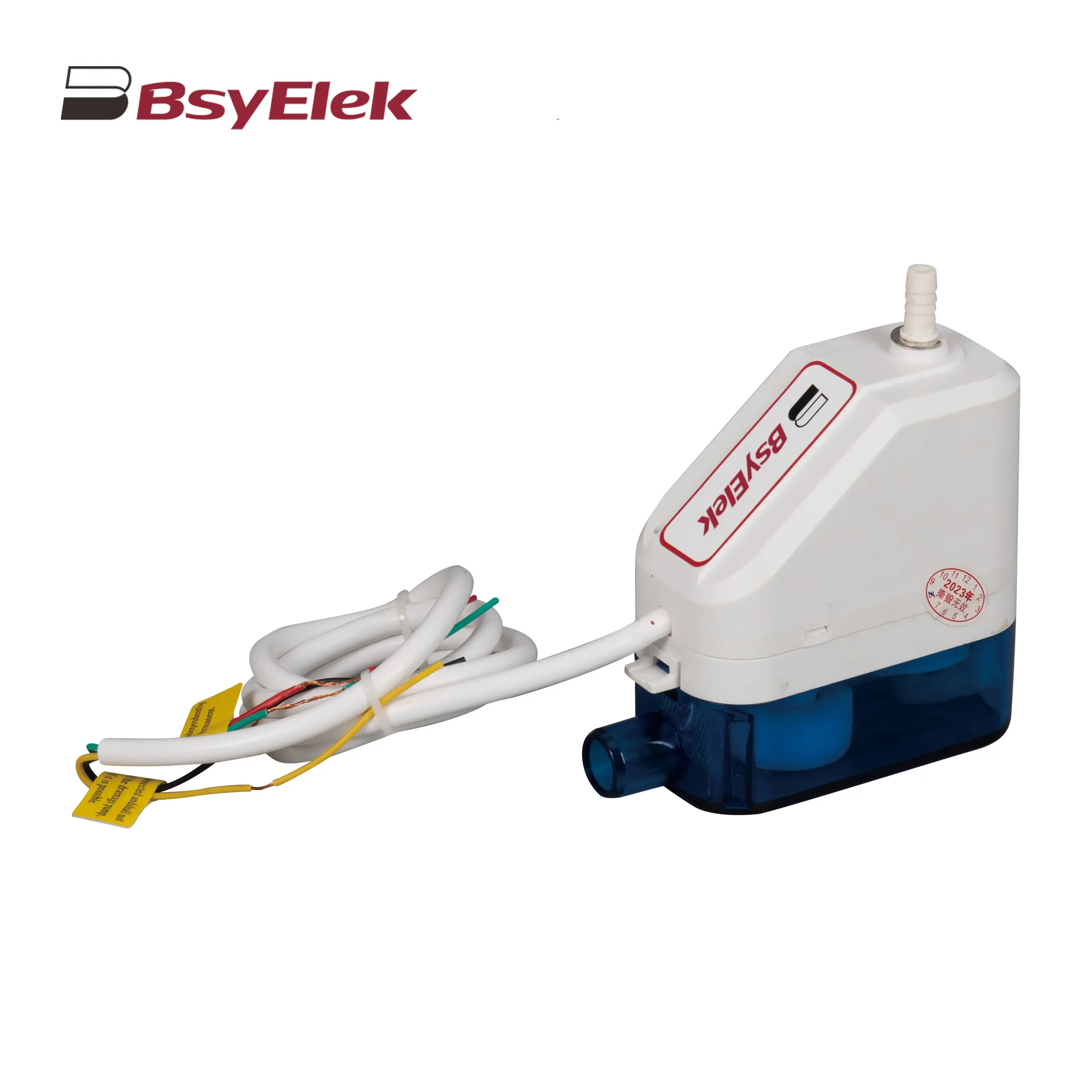 BY-24C/40C 10M Corner Drainage Pump
BY-24C/40C 10M Corner Drainage Pump
News
Top Blog
Company News
Industry Dynamics
What is a miniature circuit breaker (MCB)?
PG Series Waterproof Cable Glands with Washer for Harsh Environments
LWSF-125 125A Manual Changeover Switch ensures reliable power transfer
BYX2 AC contactor series: reliable power control for modern electrical systems
High-performance 1000V DC fuse holder optimizes solar photovoltaic system protection
BY07L-63 Residual Current Circuit Breaker Ensures Global Electrical Safety
BYQ5 ATS Isolation Dual Power Automatic Transfer Switch
BY19G 63A Manual Changeover Switch: Features and Benefits
Support
Blog
Contact Us





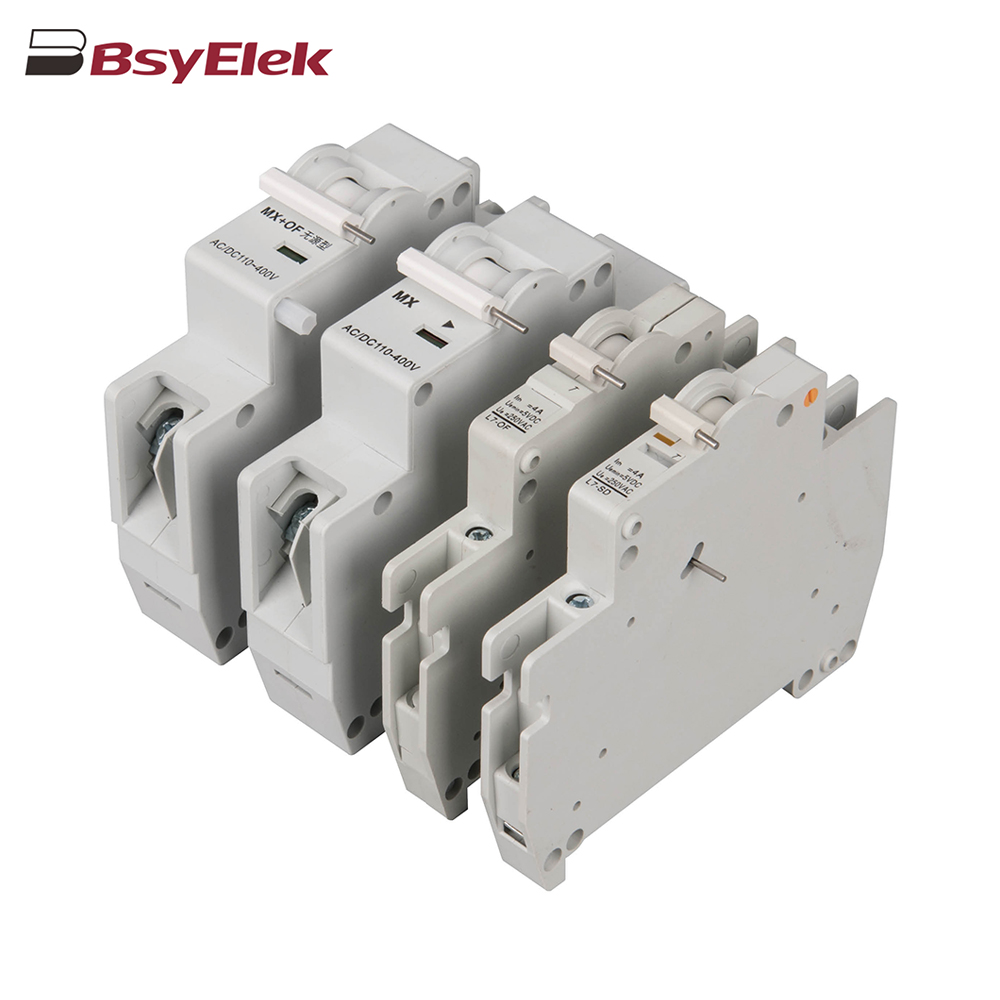 OF SD MX OF MCB Miniature Circuit Breaker Accessories
OF SD MX OF MCB Miniature Circuit Breaker Accessories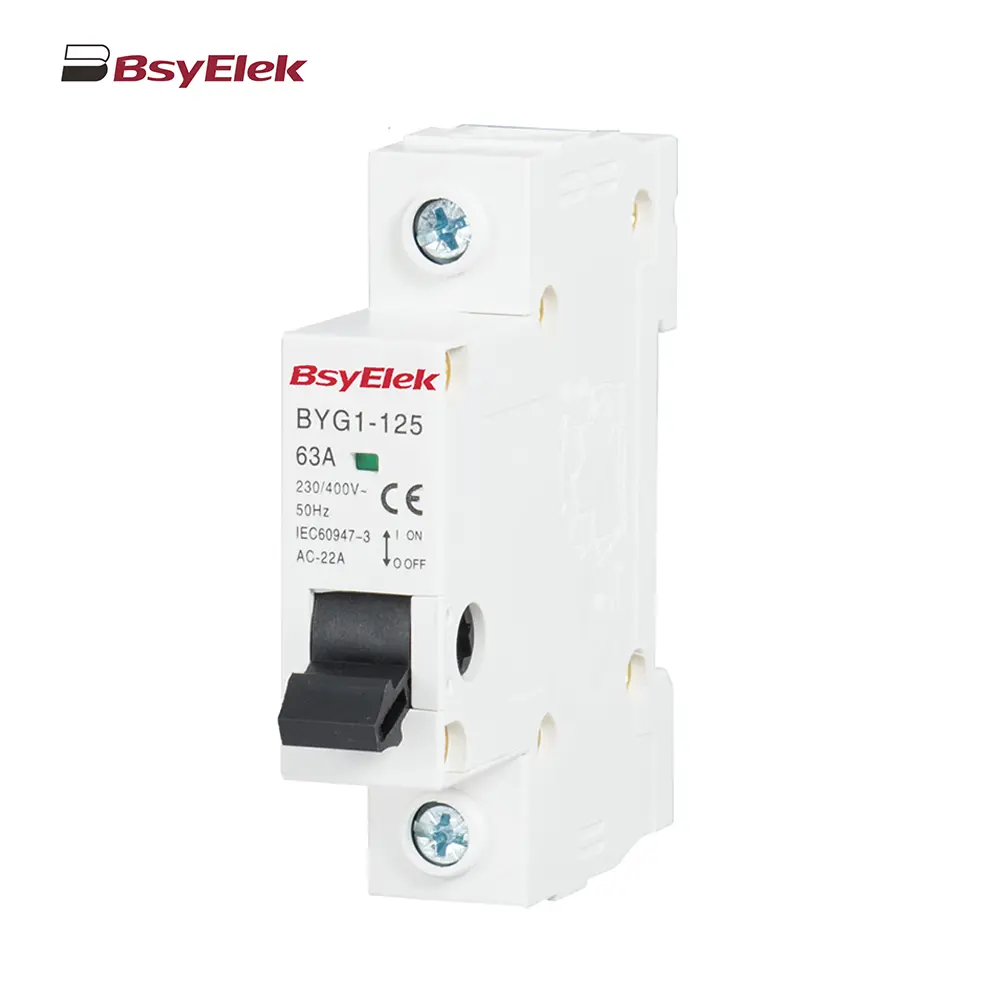 BYG1-125 Main Switch MCB Isolator Switch
BYG1-125 Main Switch MCB Isolator Switch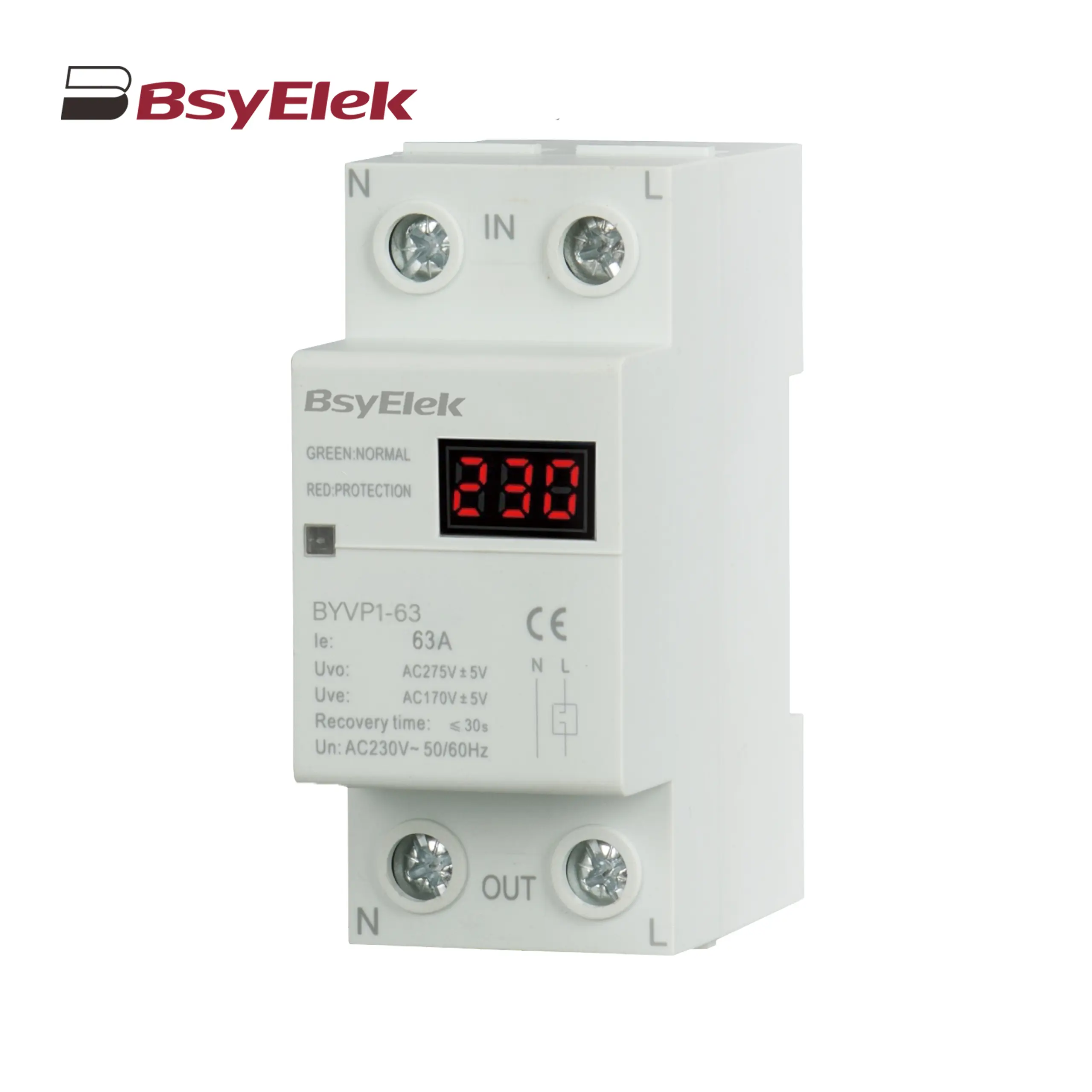 BYVP1-63 100A Single Display Overvoltage and Undervoltage Protector
BYVP1-63 100A Single Display Overvoltage and Undervoltage Protector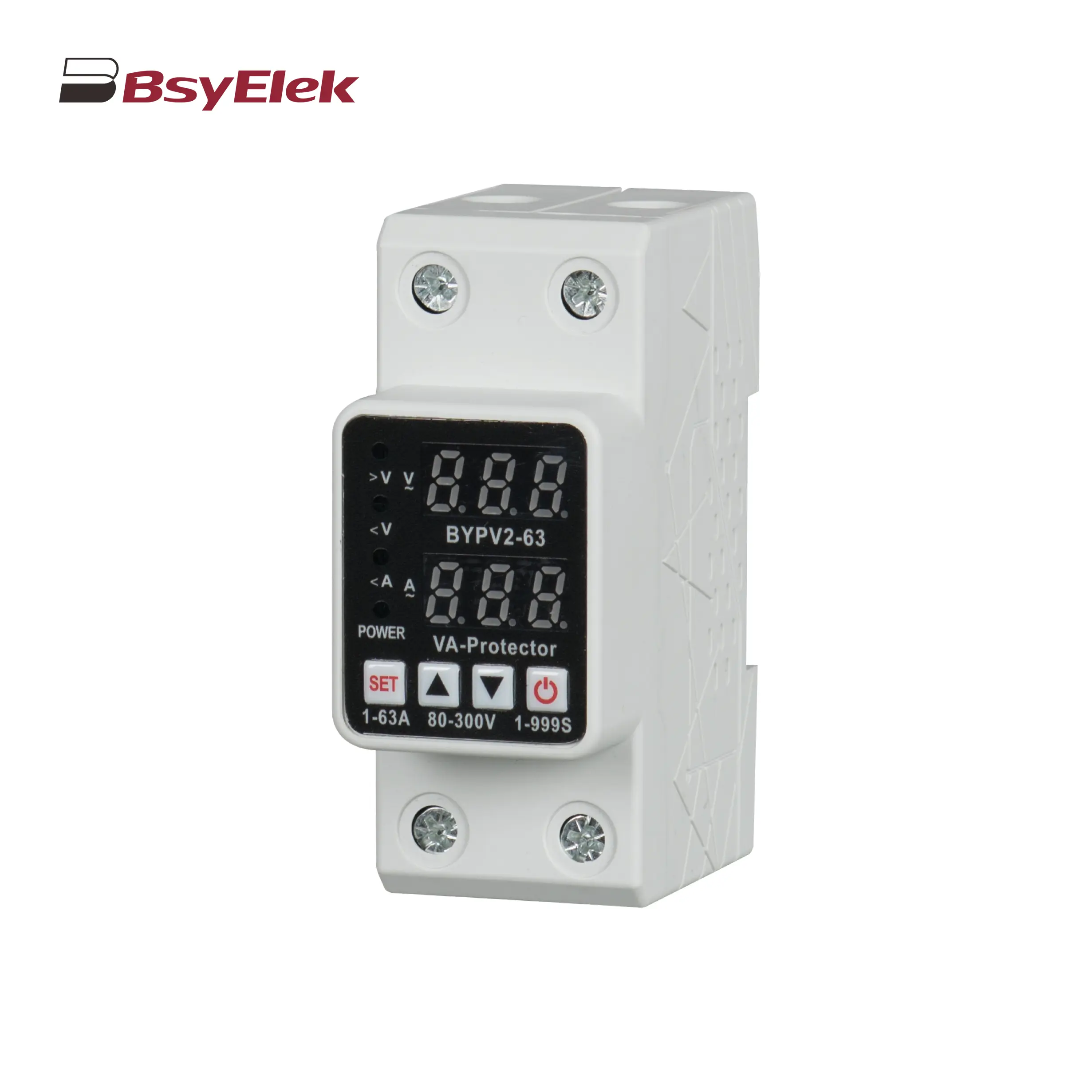 BYVP2-63 40A 63A Adjustable Dual Display Overvoltage and Undervoltage Protector
BYVP2-63 40A 63A Adjustable Dual Display Overvoltage and Undervoltage Protector BYX2 6-95A AC Contactor
BYX2 6-95A AC Contactor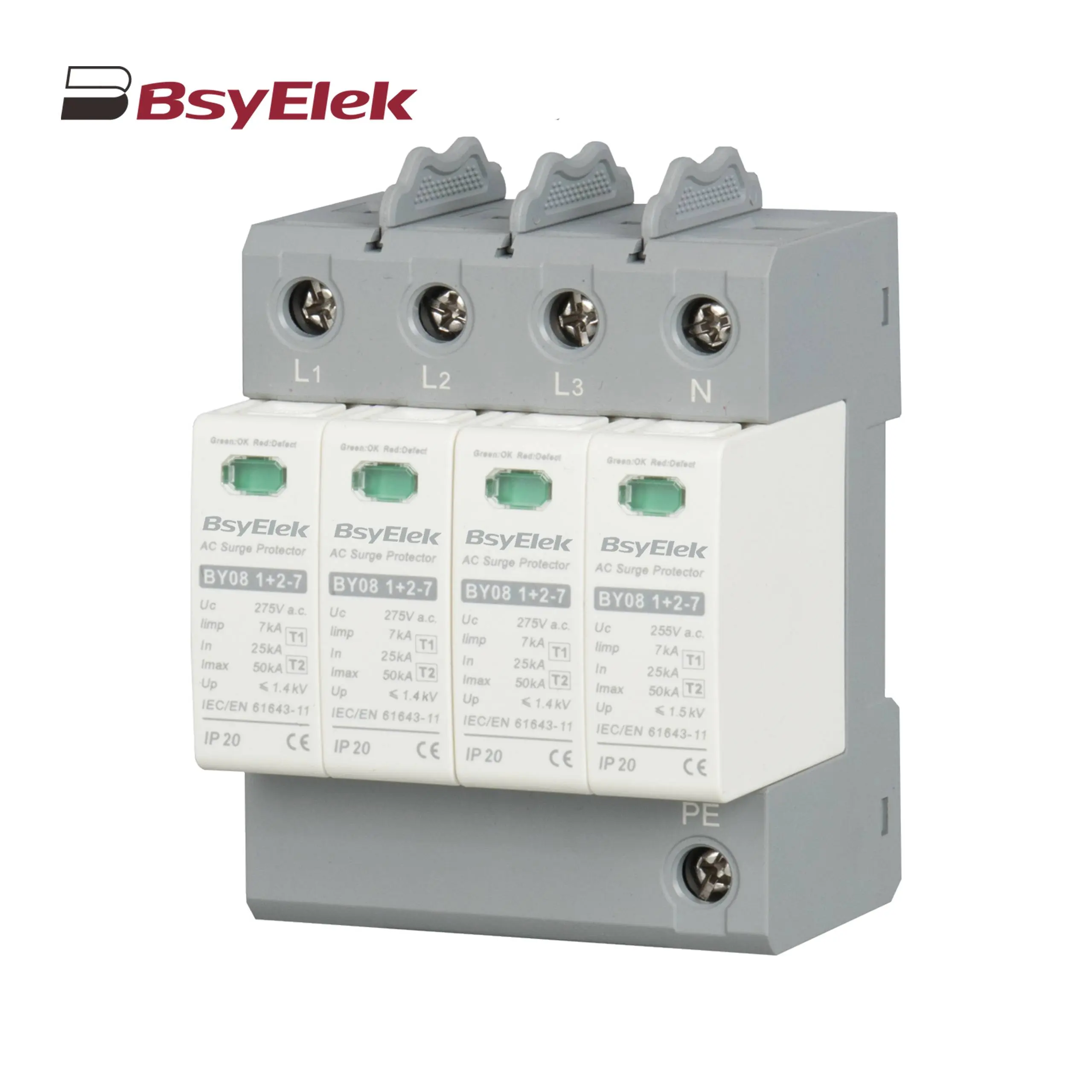 BY08 1+2-7 SPD Class T1+T2 Imax 50KA Surge Protective Device
BY08 1+2-7 SPD Class T1+T2 Imax 50KA Surge Protective Device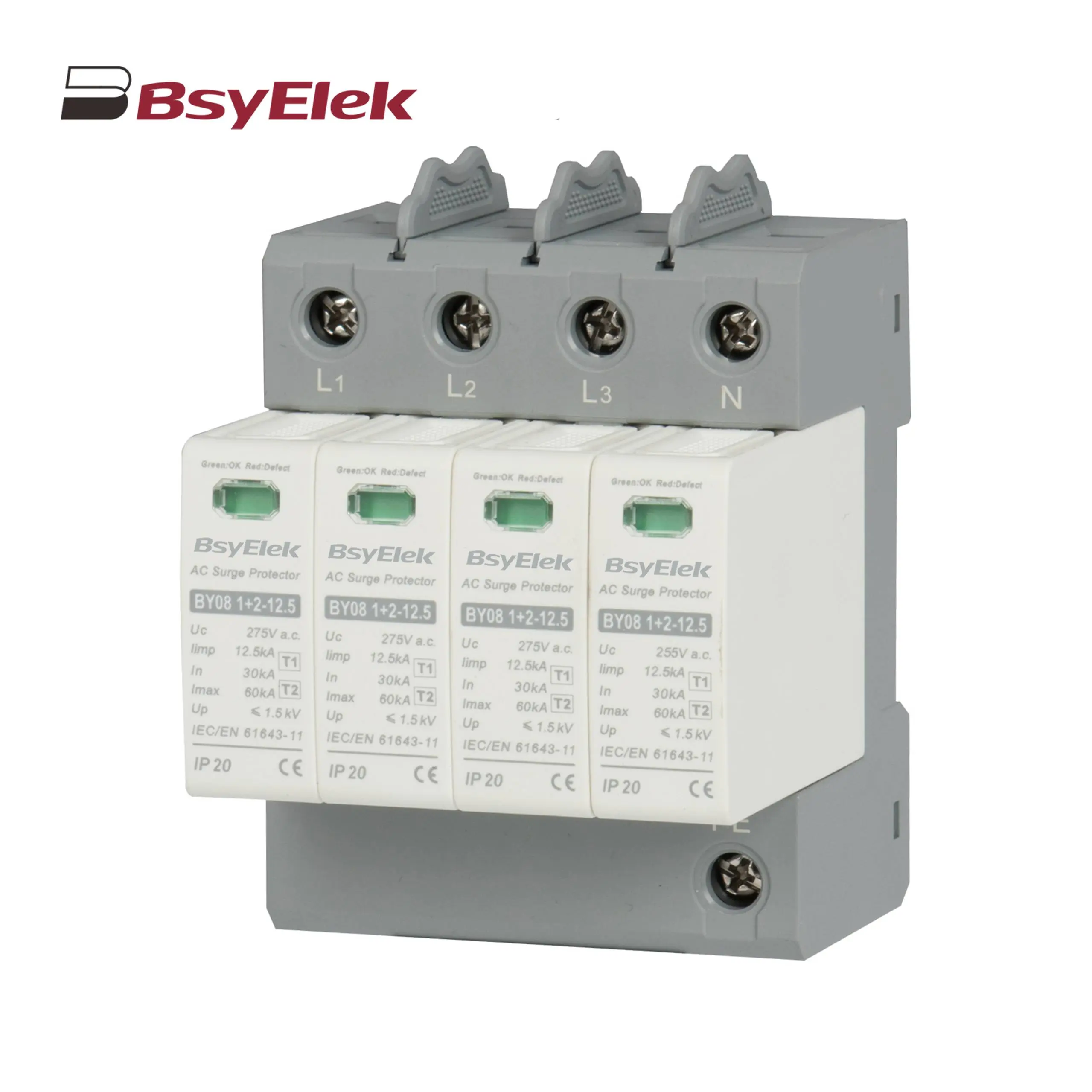 BY08 1+2-12.5 SPD Class T1+T2 Imax 60KA Surge Protective Device
BY08 1+2-12.5 SPD Class T1+T2 Imax 60KA Surge Protective Device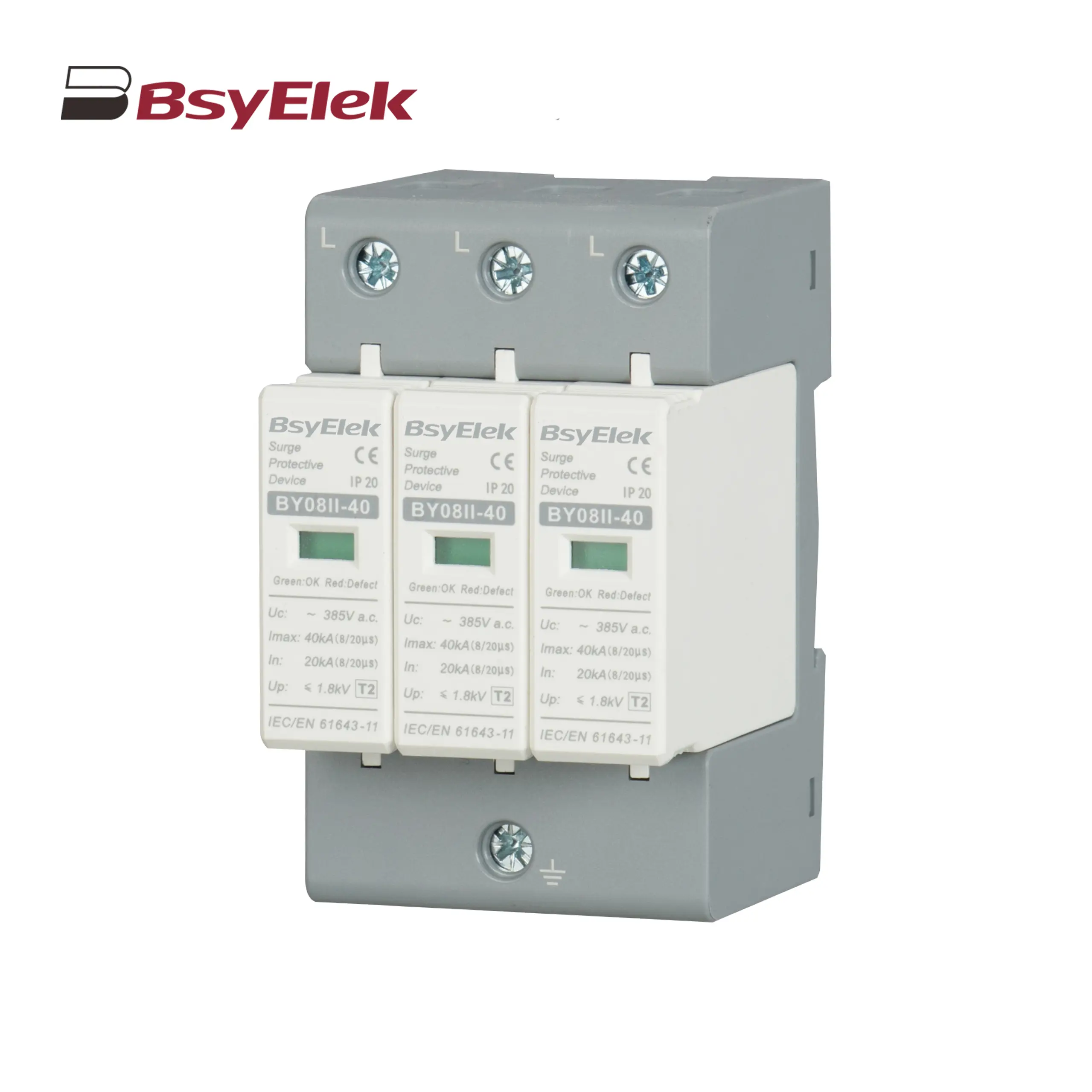 BY08II-40 SPD Class T2 Imax 40KA Surge Protective Device
BY08II-40 SPD Class T2 Imax 40KA Surge Protective Device BY19G 63A Manual Changeover Switch
BY19G 63A Manual Changeover Switch LWSF-125 125A Manual Changeover Switch
LWSF-125 125A Manual Changeover Switch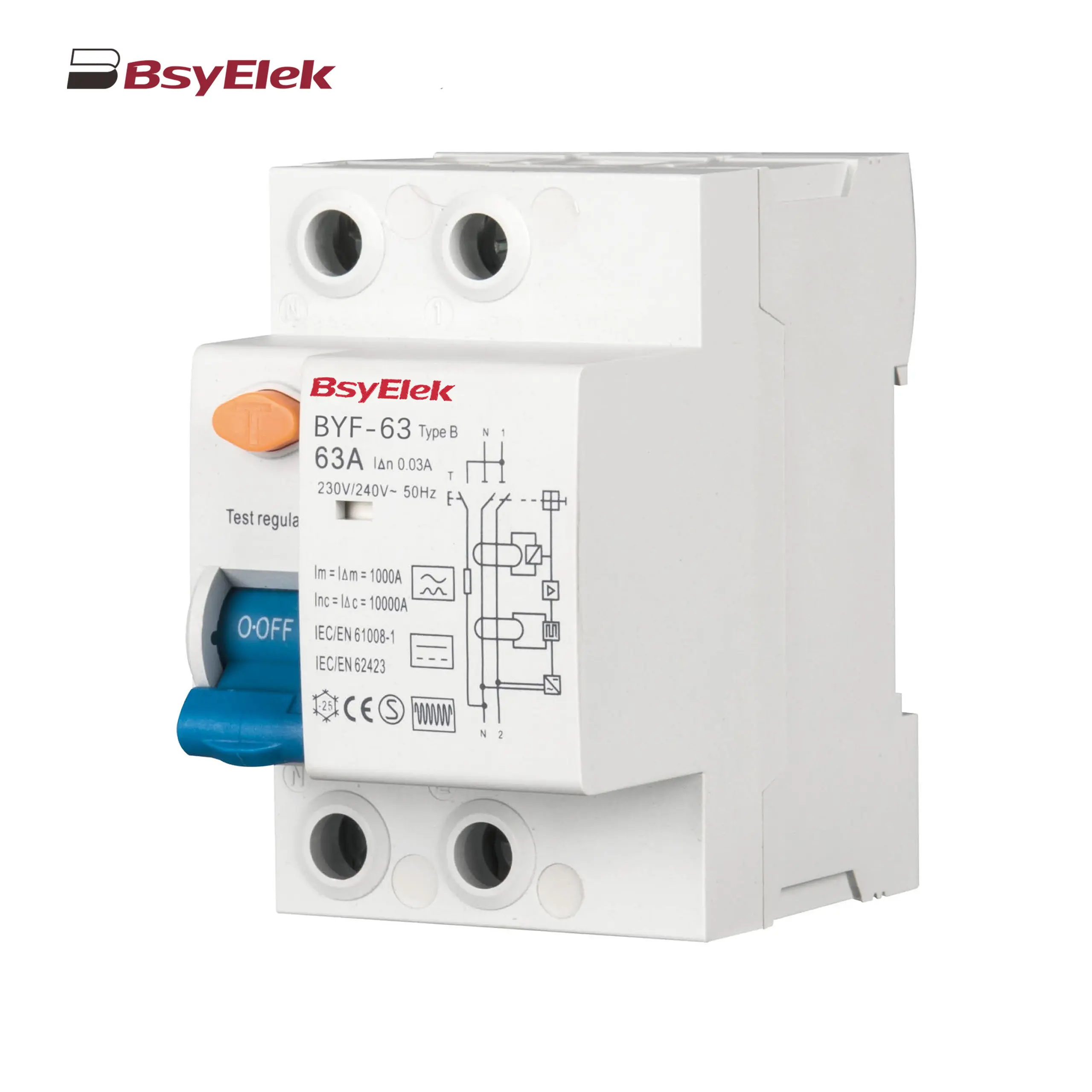 BYF-63 RCD 10KA Type B AC+A+Smoothing DC Residual Current Device
BYF-63 RCD 10KA Type B AC+A+Smoothing DC Residual Current Device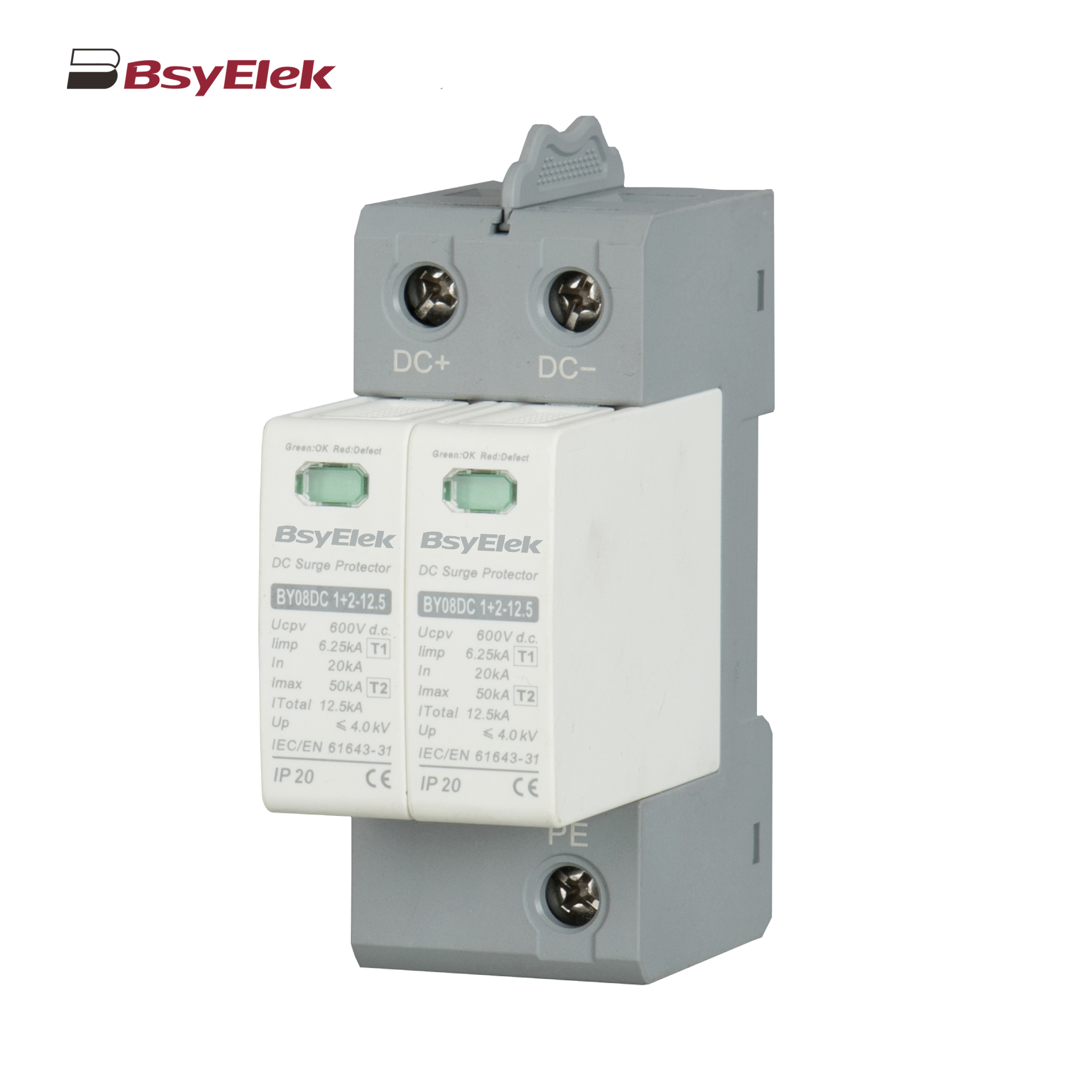 BY08DC 1+2-12.5 SPD Class T1+T2 40KA DC Surge Protective Device
BY08DC 1+2-12.5 SPD Class T1+T2 40KA DC Surge Protective Device BY08IIDC-40 SPD Class T2 40KA DC Surge Protective Device
BY08IIDC-40 SPD Class T2 40KA DC Surge Protective Device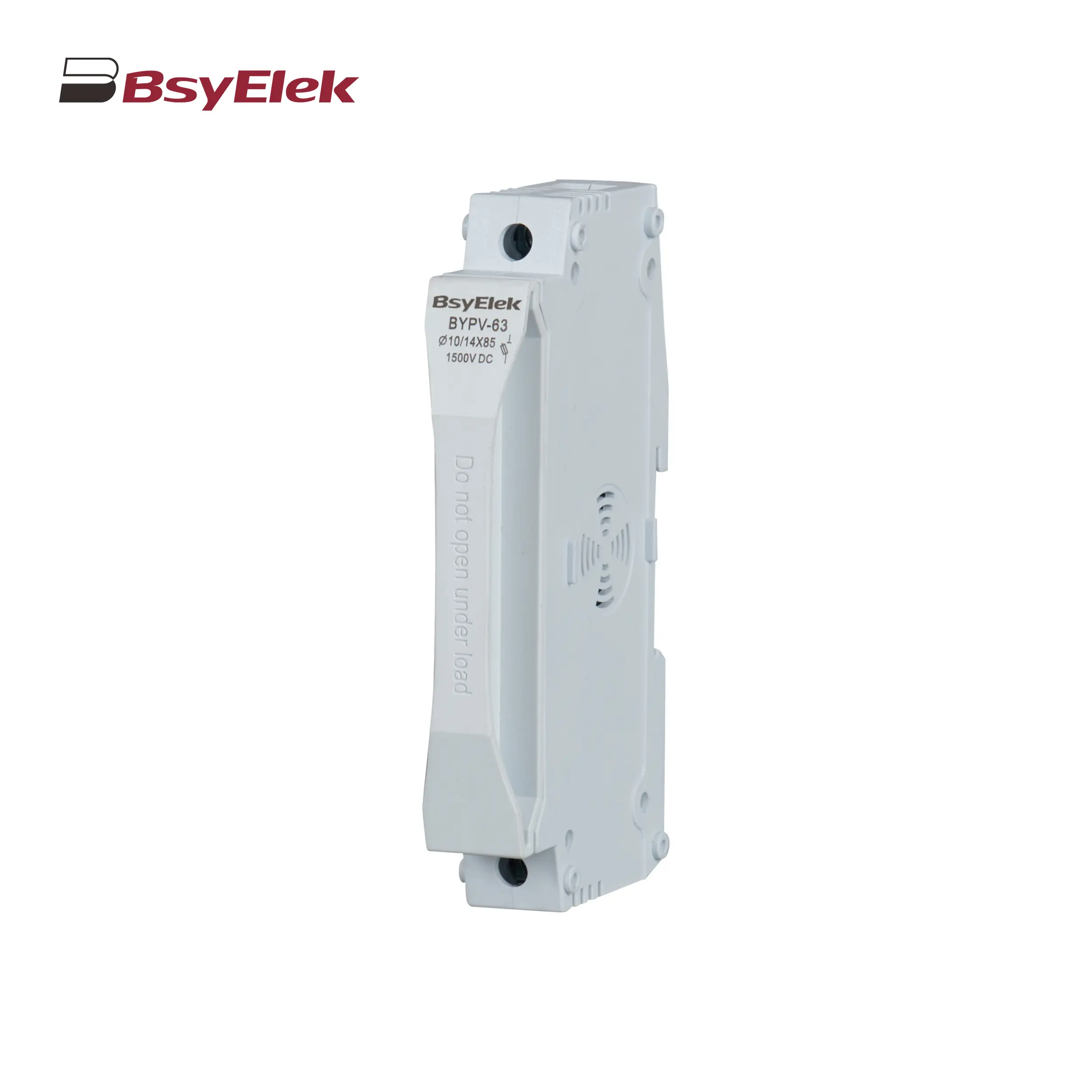 BYPV-63 1500VDC 50A Fuse Holder with 10x85mm 14x85mm Fuse Link
BYPV-63 1500VDC 50A Fuse Holder with 10x85mm 14x85mm Fuse Link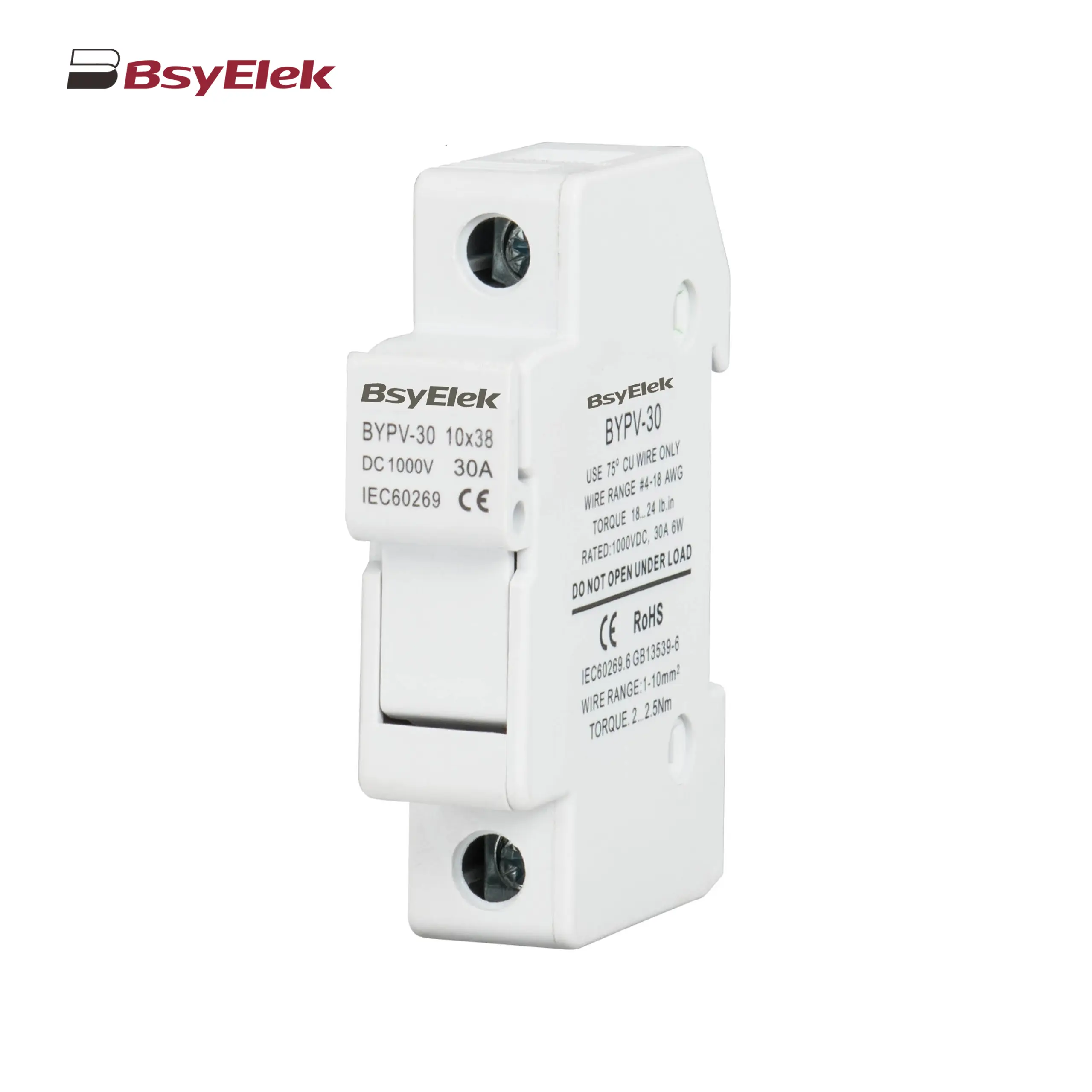 BYPV-30 1000VDC 32A Fuse Holder with 10x38mm Fuse Link
BYPV-30 1000VDC 32A Fuse Holder with 10x38mm Fuse Link BYPV-ELR2 PV Isolator Switch with Enclosed Version
BYPV-ELR2 PV Isolator Switch with Enclosed Version BYPV-ELR1 PV Isolator Switch with Enclosed Version
BYPV-ELR1 PV Isolator Switch with Enclosed Version BYPV-NL1/T PV Isolator Switch with Ultra-thin Lever Handle
BYPV-NL1/T PV Isolator Switch with Ultra-thin Lever Handle BYPV-NL1 PV Isolator Switch with Lever Handle
BYPV-NL1 PV Isolator Switch with Lever Handle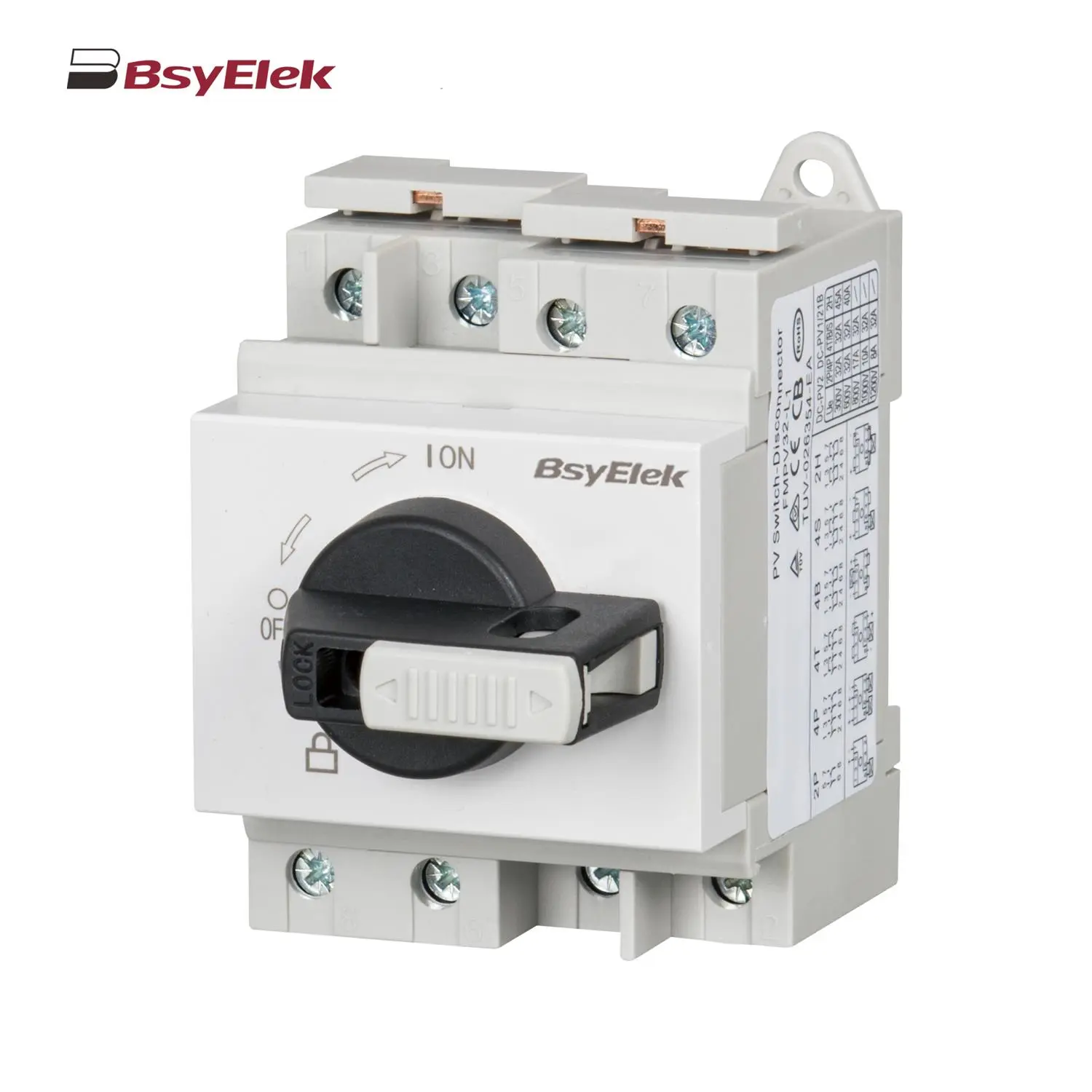 BYPV-L1/L2 PV Isolator Switch with Lockable Lever Handle
BYPV-L1/L2 PV Isolator Switch with Lockable Lever Handle PV-BY-01 30A/50A 1000V Photovoltaic Connector
PV-BY-01 30A/50A 1000V Photovoltaic Connector PV-BY-02 30A/50A 1500V Photovoltaic Connector
PV-BY-02 30A/50A 1500V Photovoltaic Connector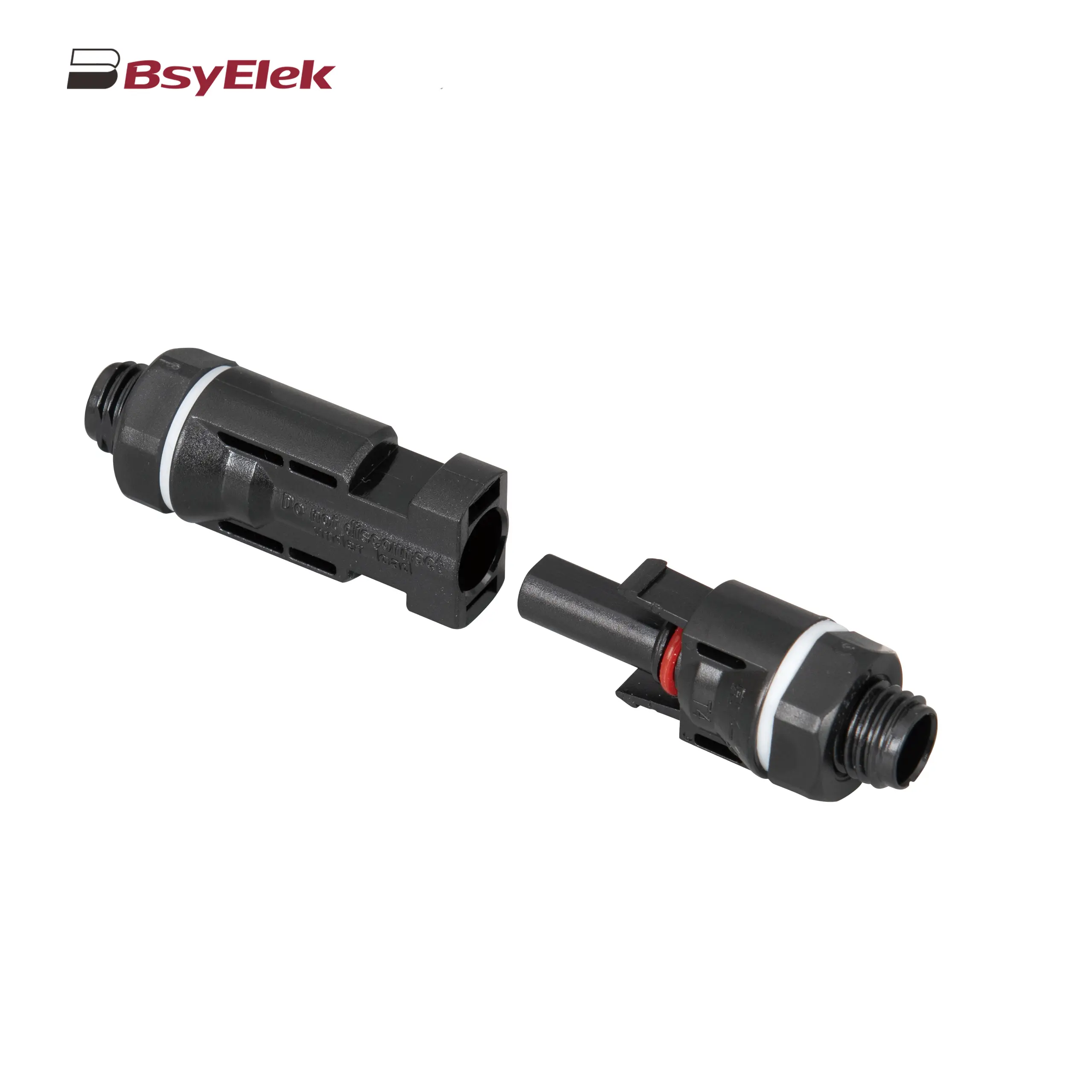 PV-BY-03 30A/50A 1000V Panel Mount Photovoltaic Connector
PV-BY-03 30A/50A 1000V Panel Mount Photovoltaic Connector PV-BY-F01 30A 1500V Diode/Fuse Type Connector
PV-BY-F01 30A 1500V Diode/Fuse Type Connector PV-BY-T 50A 1500V T Type Branch Connector
PV-BY-T 50A 1500V T Type Branch Connector PV-BY-Y 30A 1500V Y Type Branch Connector
PV-BY-Y 30A 1500V Y Type Branch Connector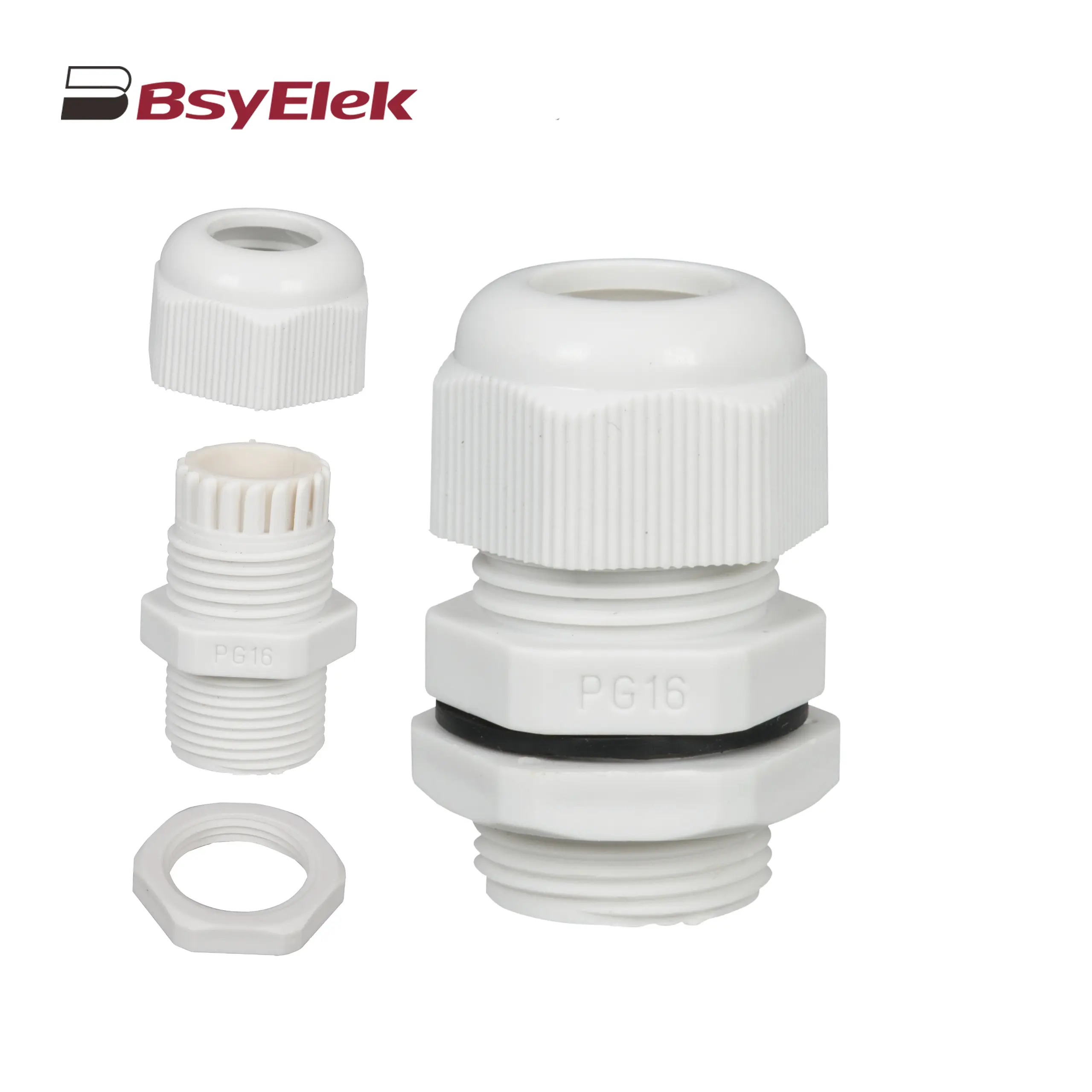 PG Waterproof Cable Gland with Washer
PG Waterproof Cable Gland with Washer Photovoltaic Cable
Photovoltaic Cable HD11N Photovoltaic Knife Switch
HD11N Photovoltaic Knife Switch BYM3DC MCCB Photovoltaic DC Molded Case Circuit Breaker
BYM3DC MCCB Photovoltaic DC Molded Case Circuit Breaker BYM1DC MCCB 1000VDC Thermal Magnetic Type DC Molded Case Circuit Breaker
BYM1DC MCCB 1000VDC Thermal Magnetic Type DC Molded Case Circuit Breaker BYM1E MCCB Electronic Type Molded Case Circuit Breaker
BYM1E MCCB Electronic Type Molded Case Circuit Breaker BYM1 MCCB Thermal Magnetic AC Molded Case Circuit Breaker
BYM1 MCCB Thermal Magnetic AC Molded Case Circuit Breaker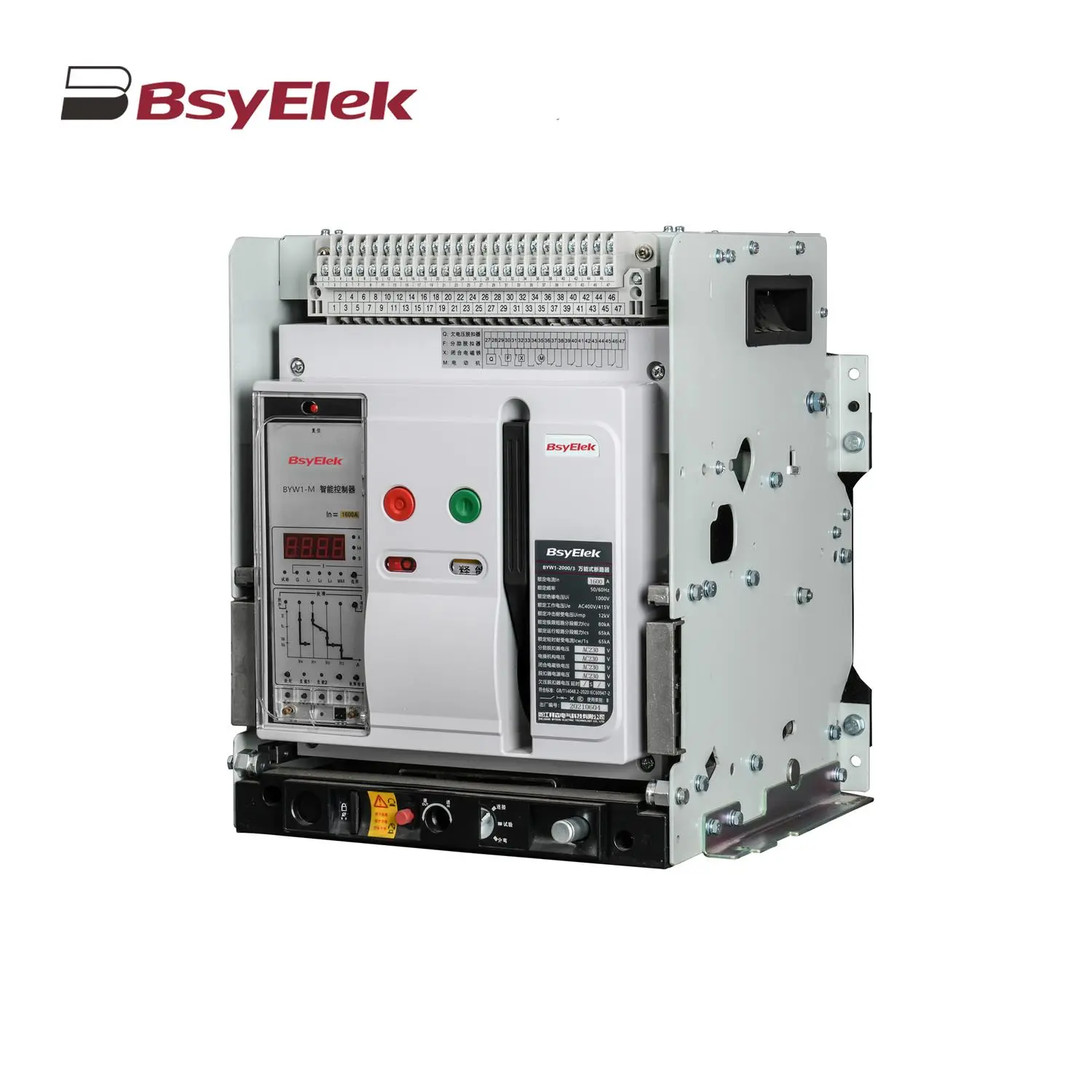 BYW1 ACB Intelligent Universal Air Circuit Breaker
BYW1 ACB Intelligent Universal Air Circuit Breaker BYQ1 ATS Isolated Type PC Level Dual Power Automatic Transfer Switch
BYQ1 ATS Isolated Type PC Level Dual Power Automatic Transfer Switch BYQ1 ATS Intelligent Type CB Level Dual Power Automatic Transfer Switch
BYQ1 ATS Intelligent Type CB Level Dual Power Automatic Transfer Switch BYQ1 ATS End Type CB Level Dual Power Automatic Transfer Switch
BYQ1 ATS End Type CB Level Dual Power Automatic Transfer Switch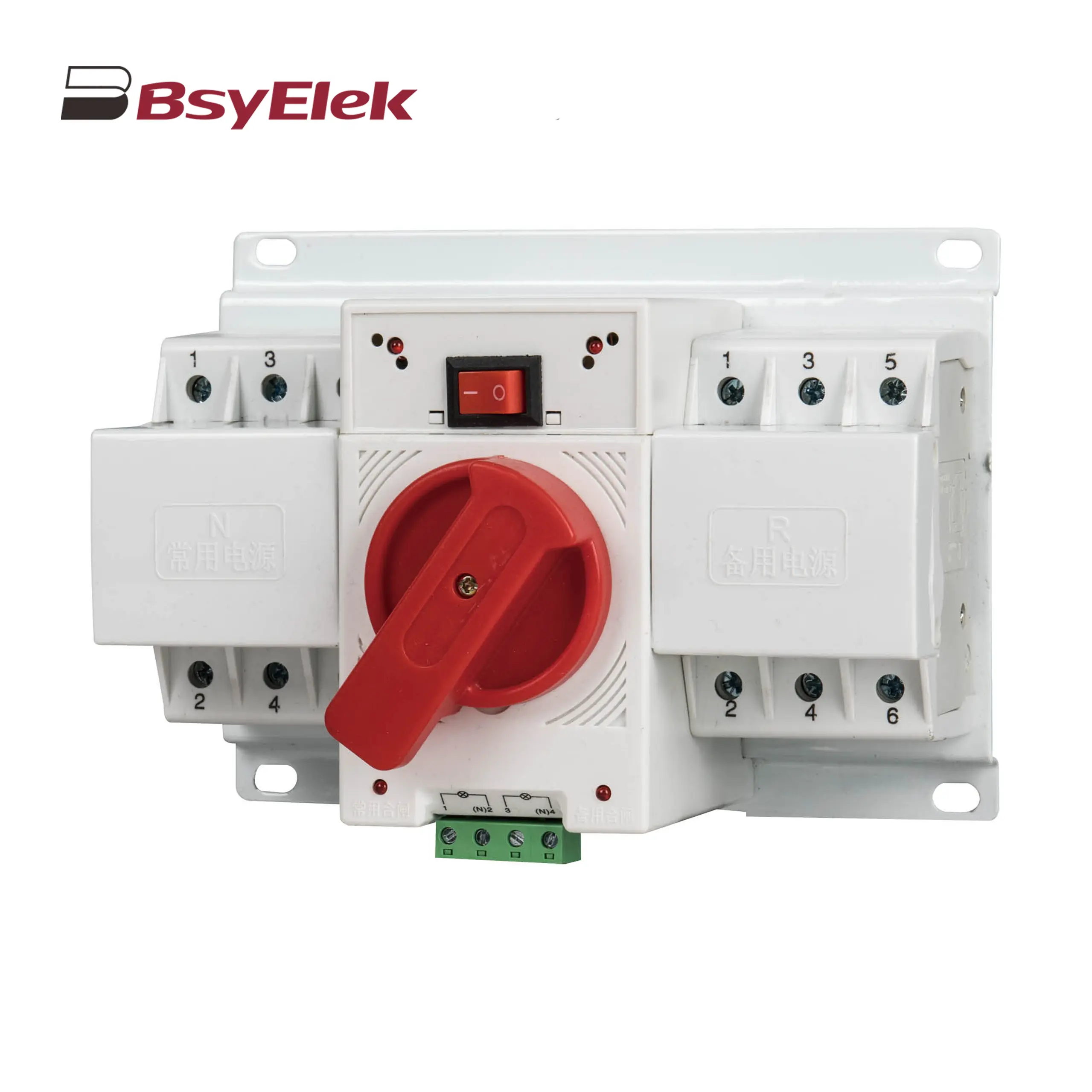 BYQ1 ATS Mini Type CB Level Dual Power Automatic Transfer Switch
BYQ1 ATS Mini Type CB Level Dual Power Automatic Transfer Switch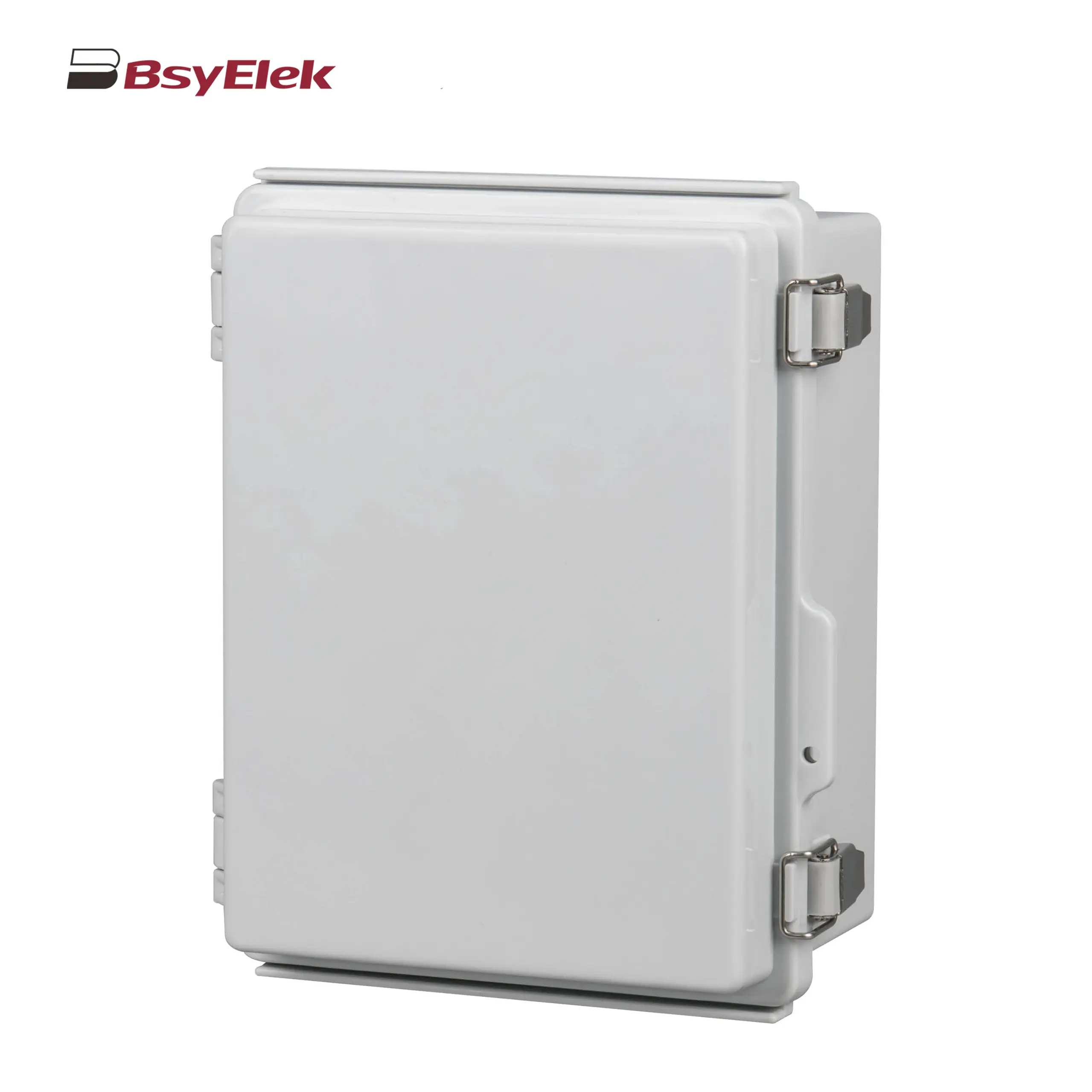 Stainless Steel Hinge Type Electrical Box
Stainless Steel Hinge Type Electrical Box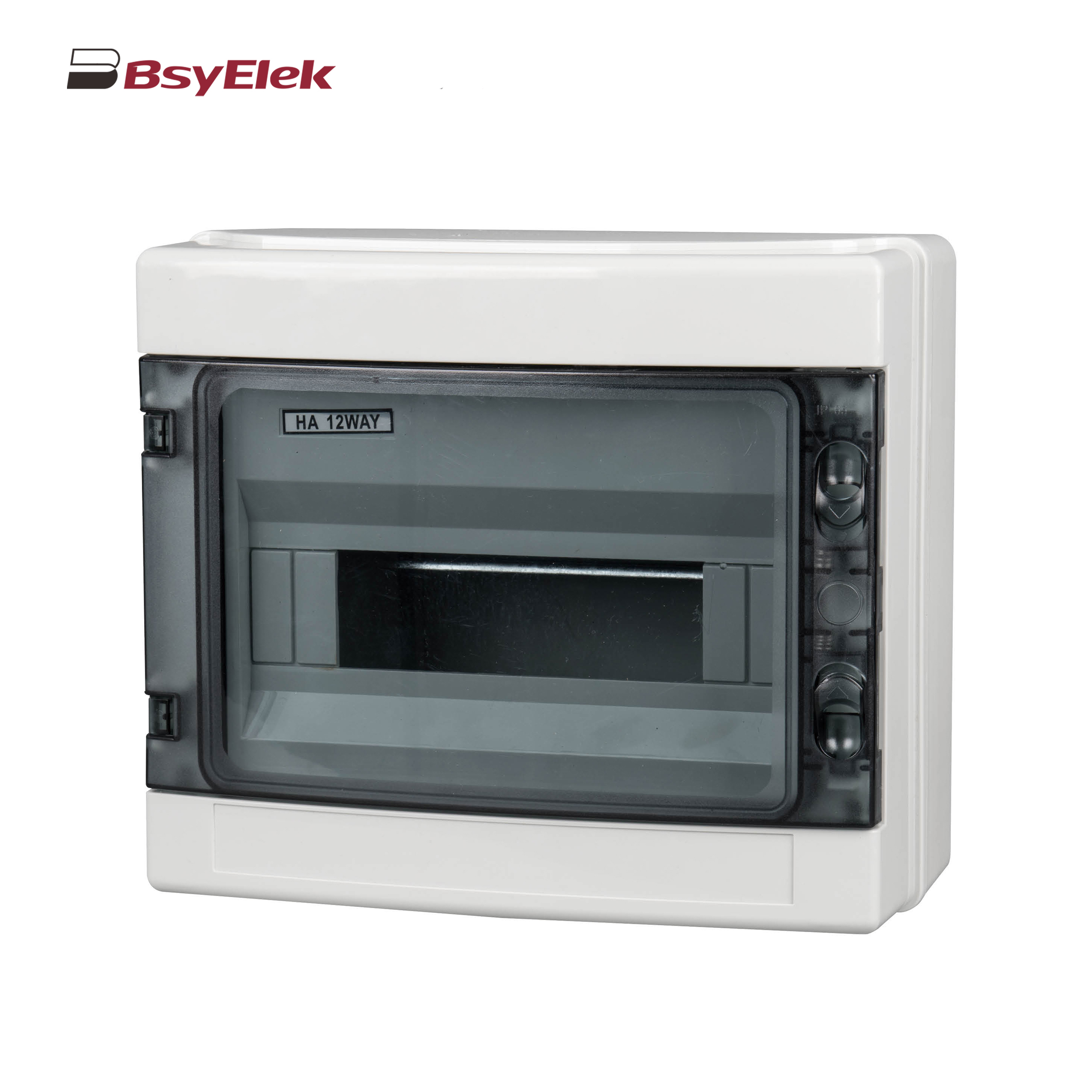 HA Waterproof Distribution Box
HA Waterproof Distribution Box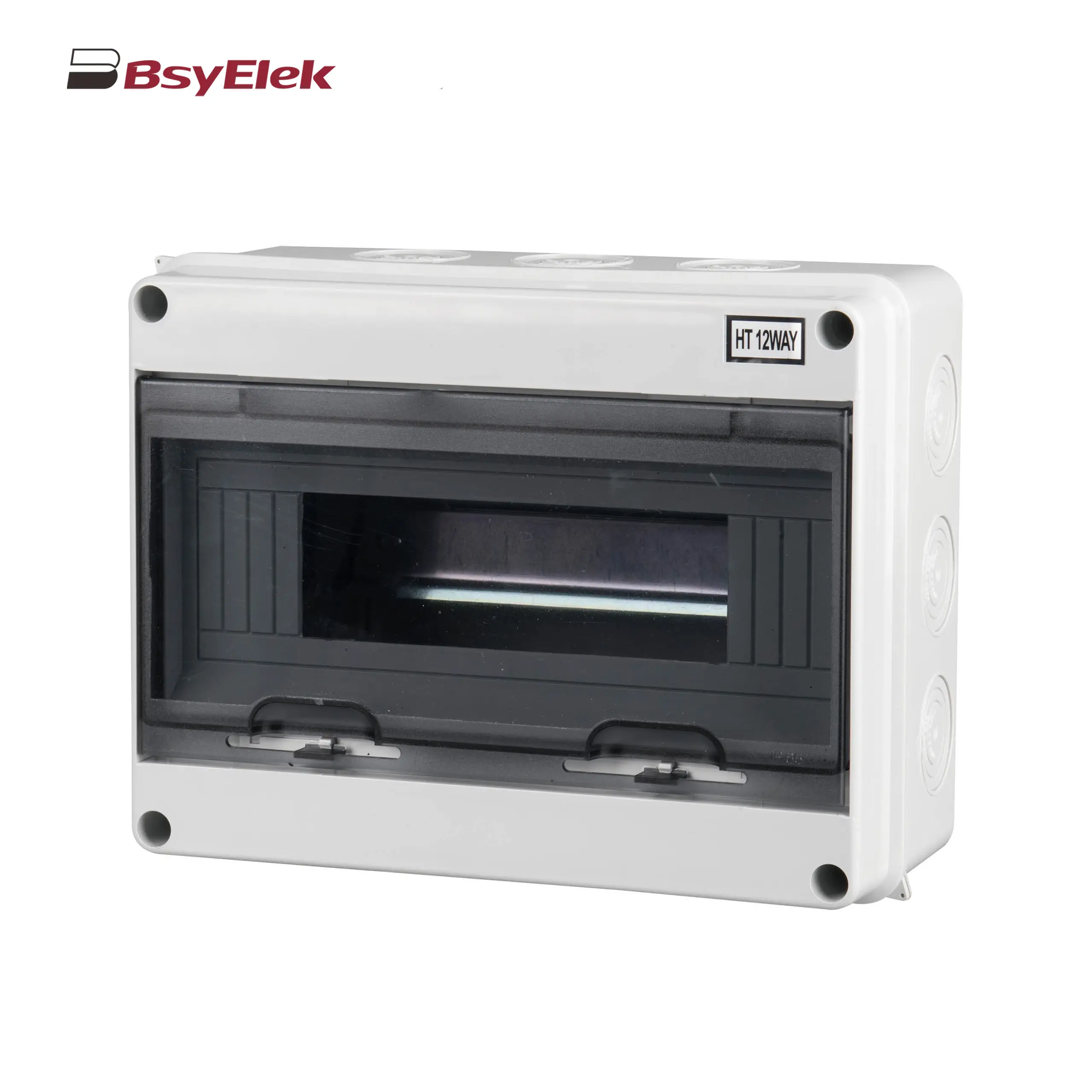 HT Waterproof Distribution Box
HT Waterproof Distribution Box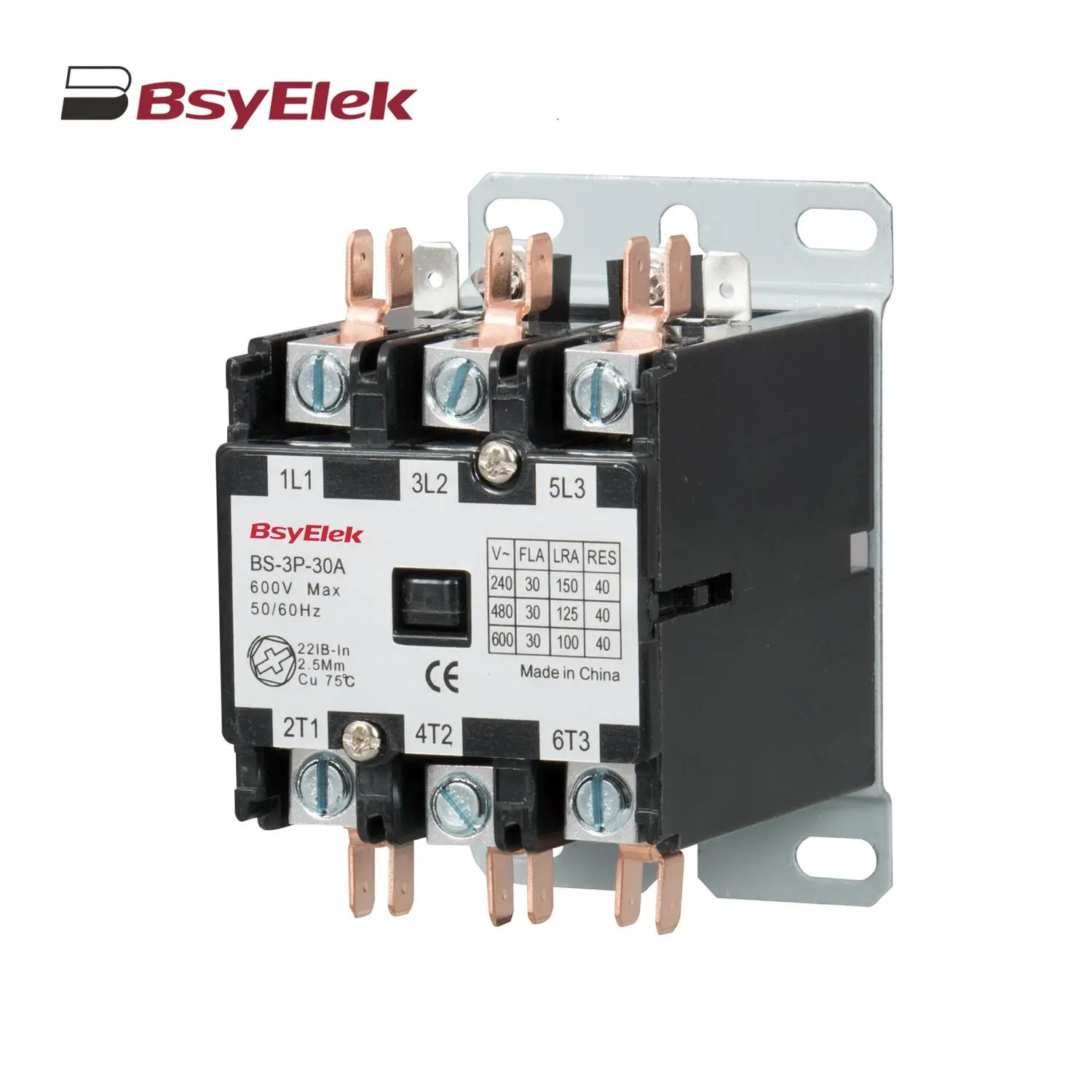 BS Definite Purpose Magnetic AC Contactor
BS Definite Purpose Magnetic AC Contactor


